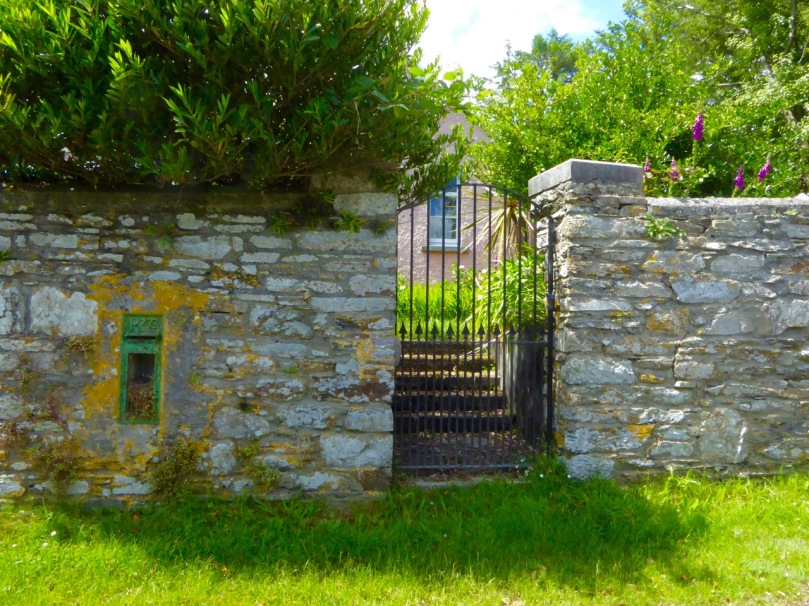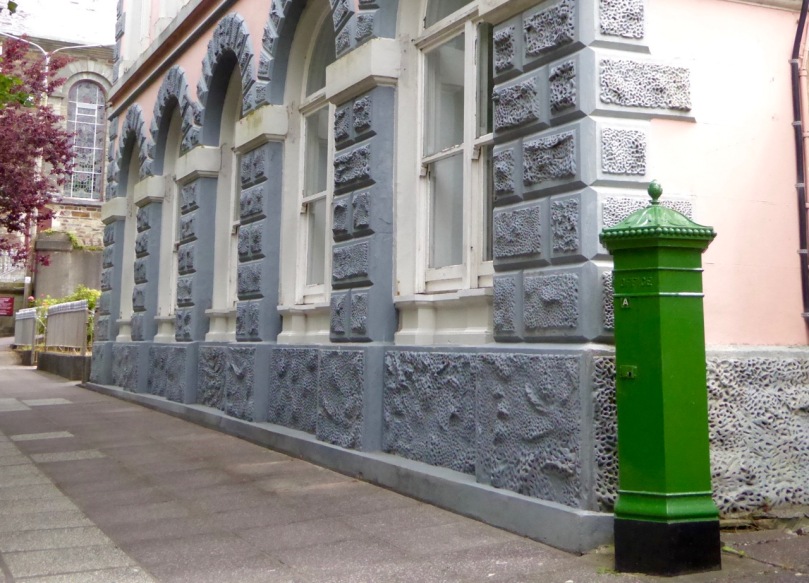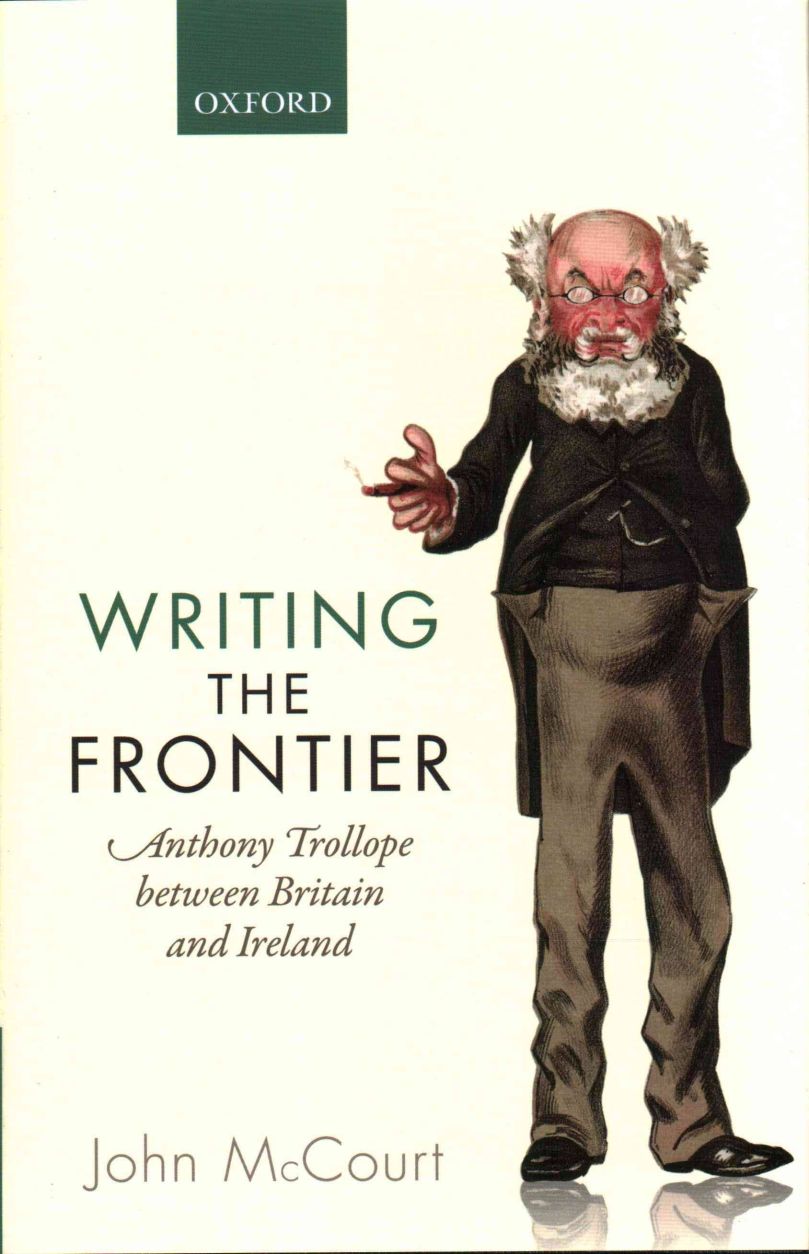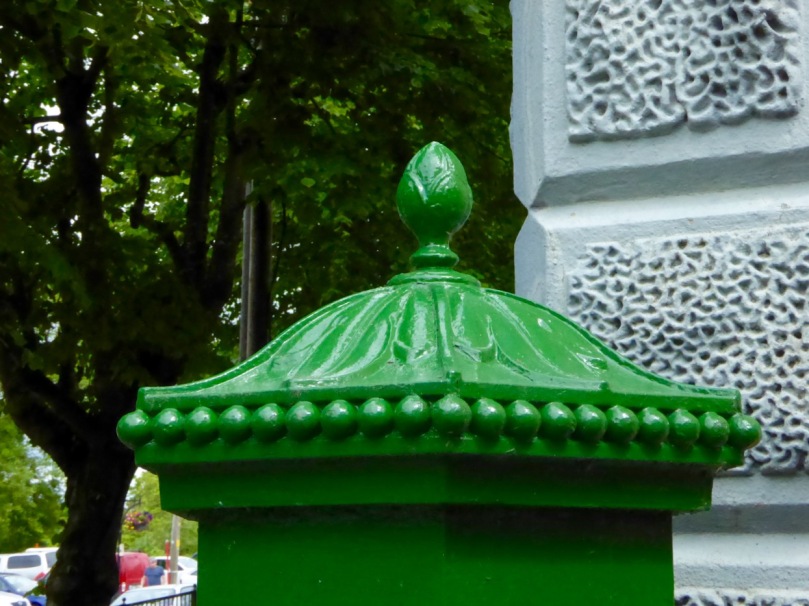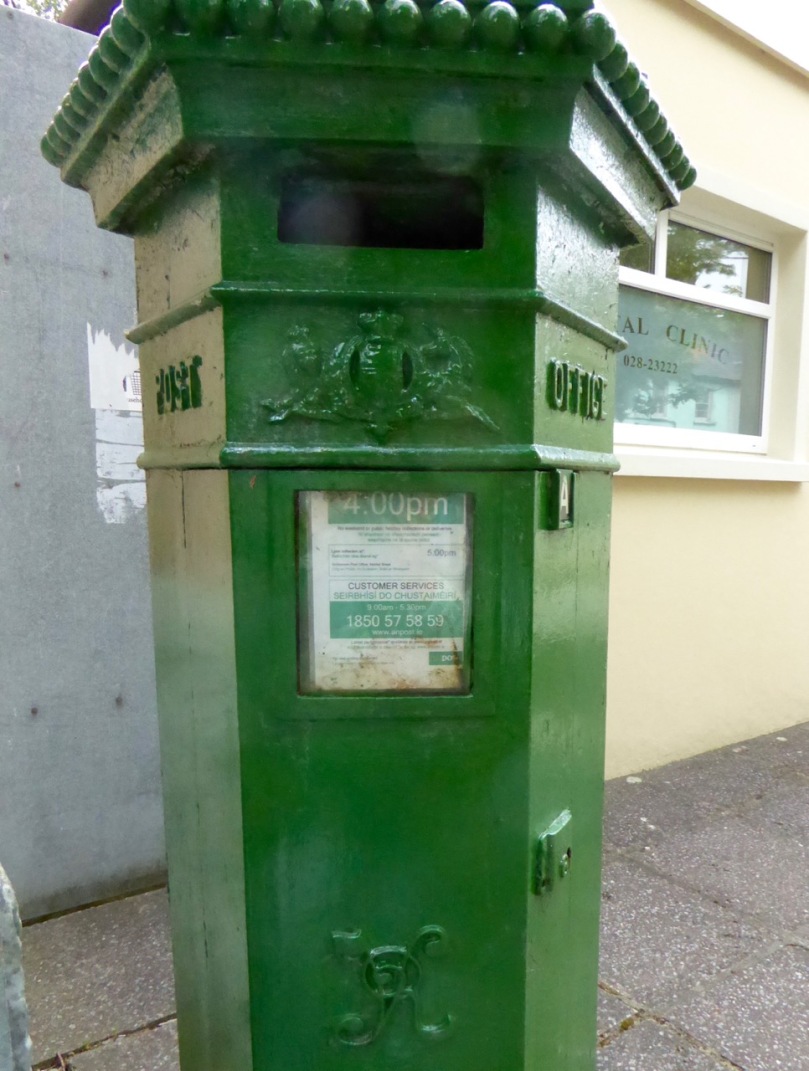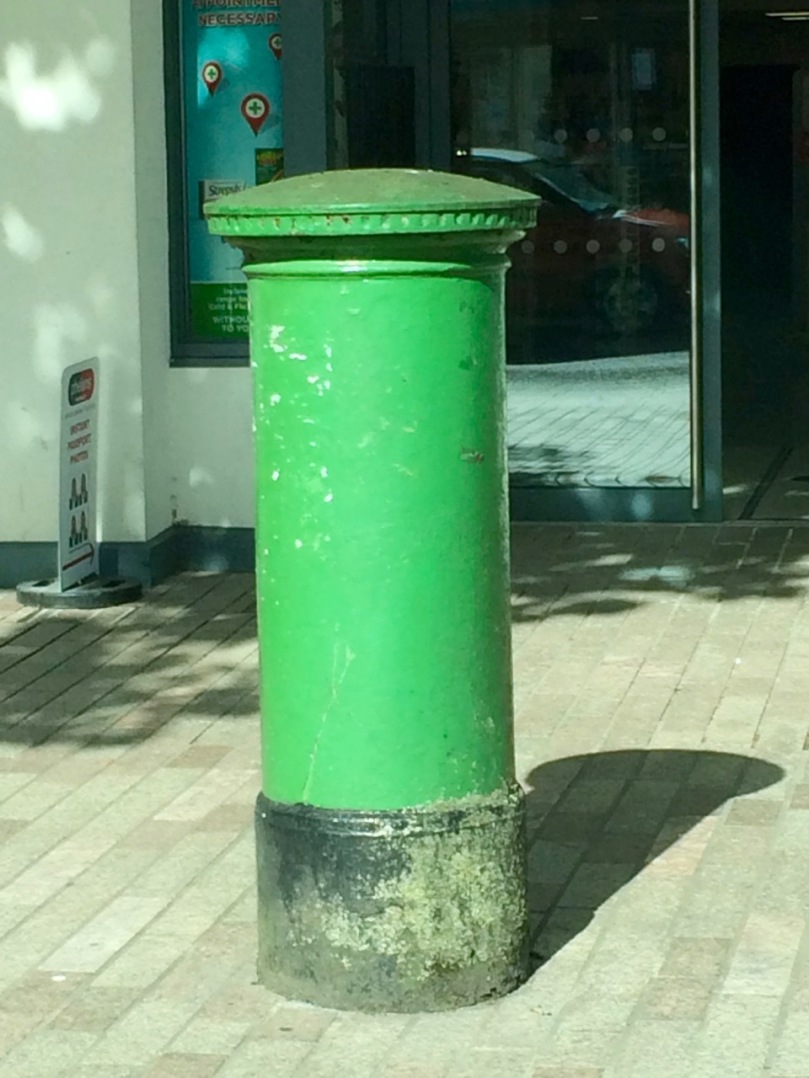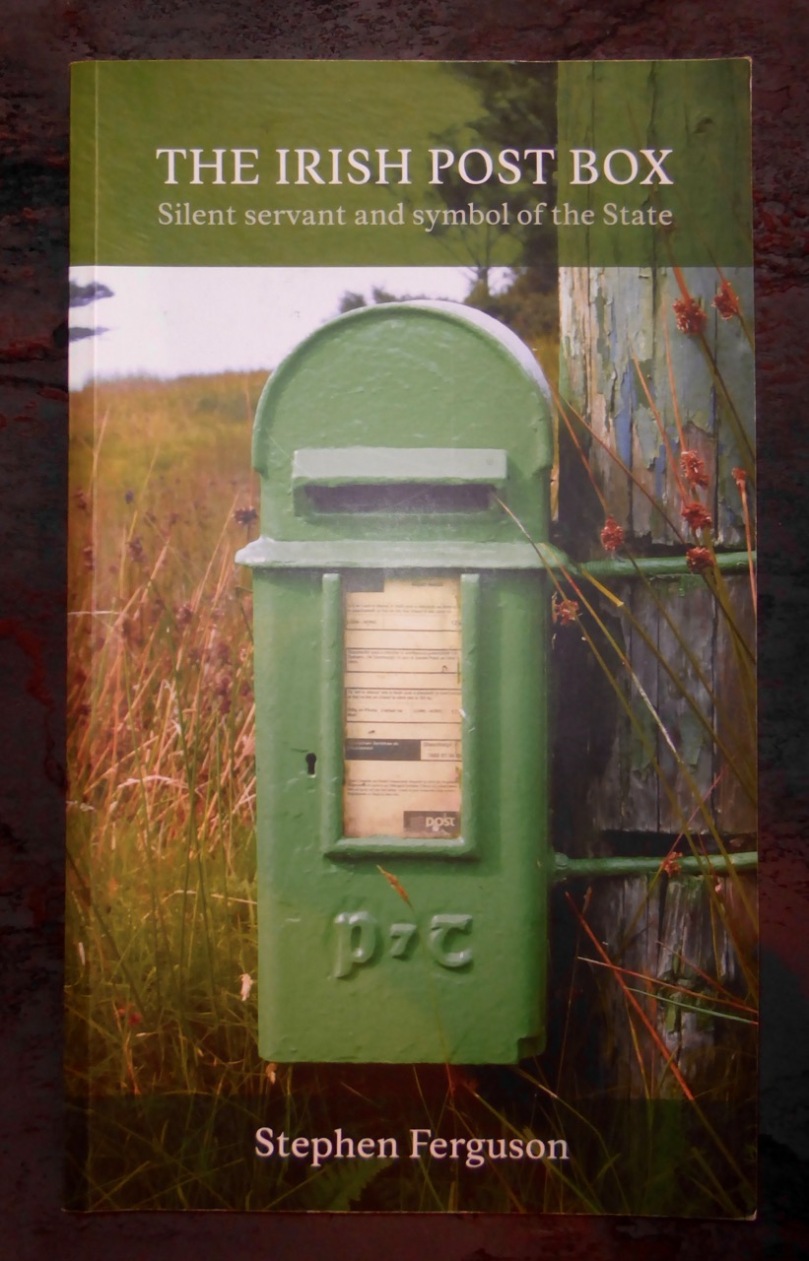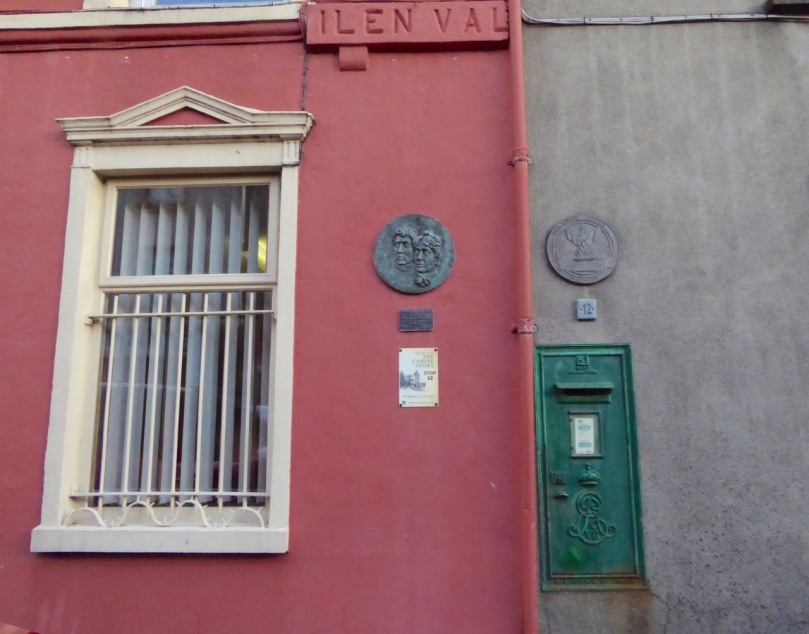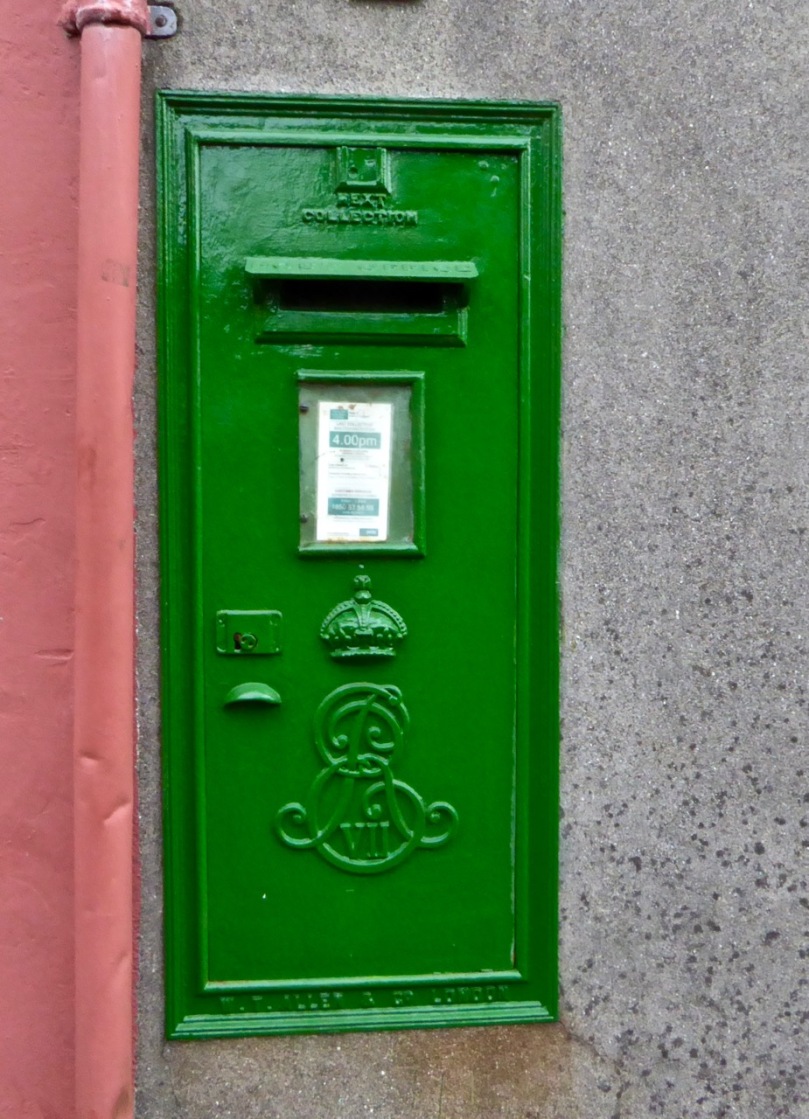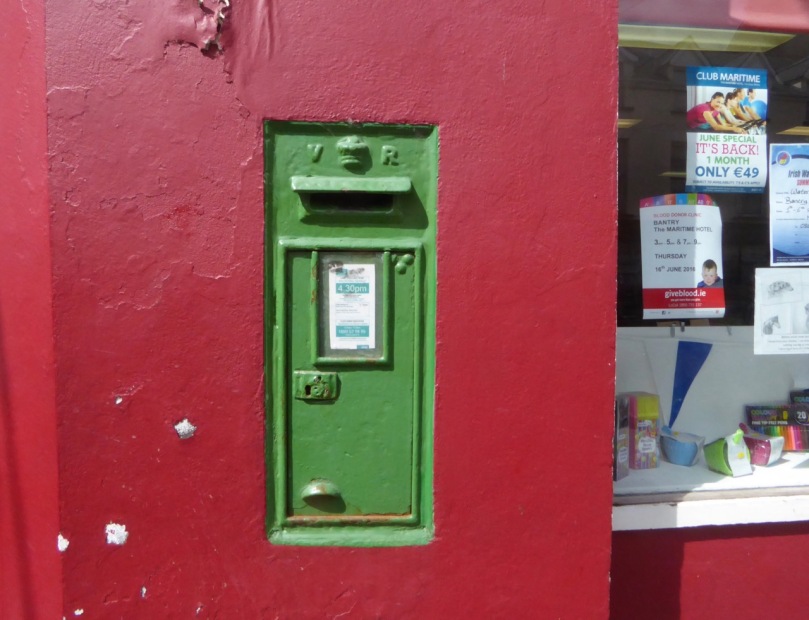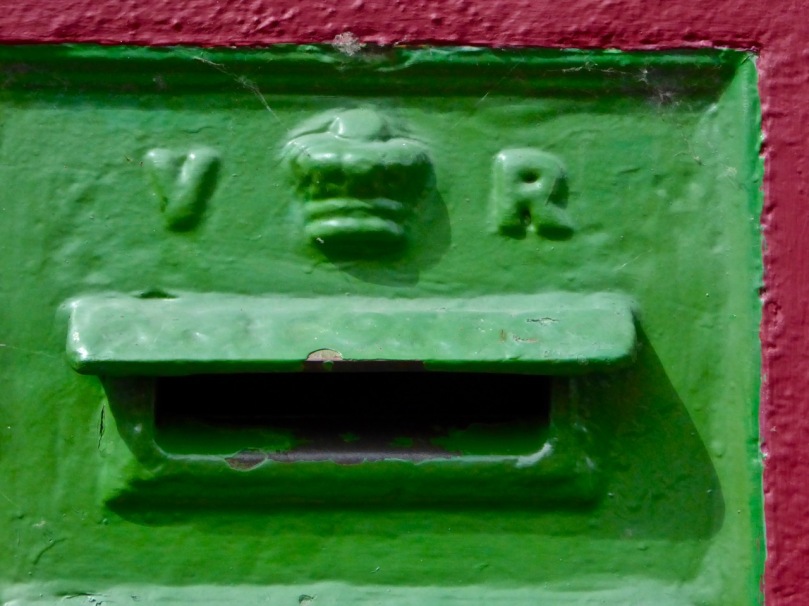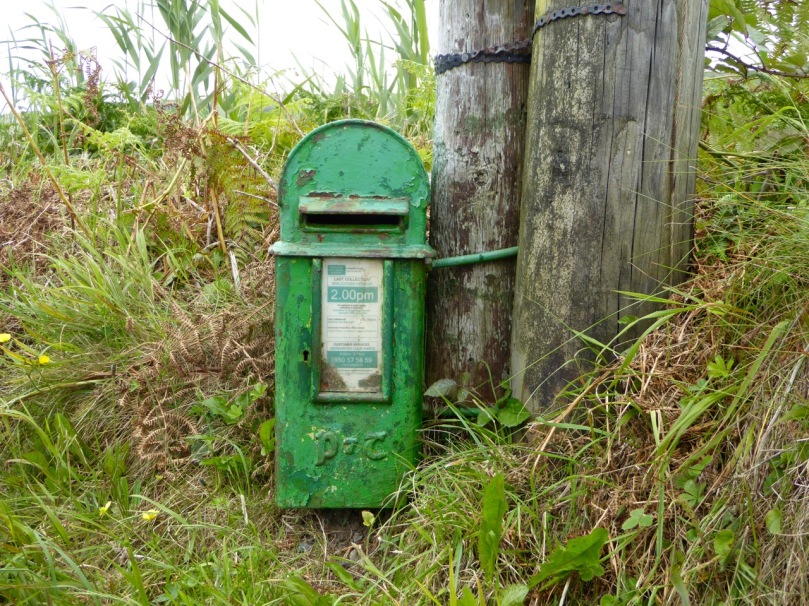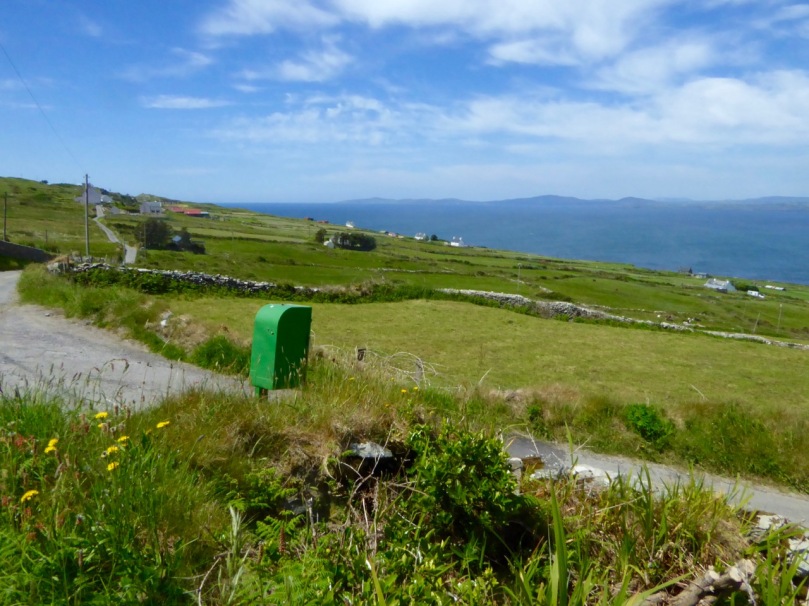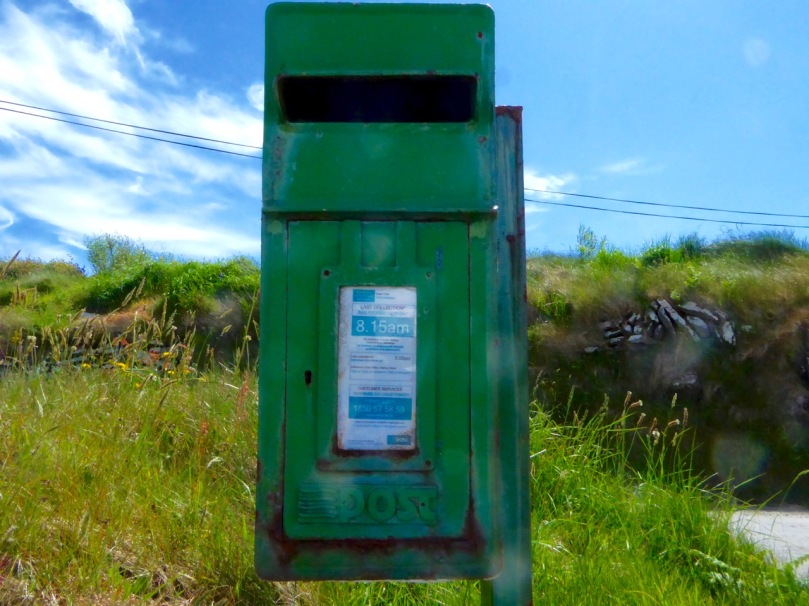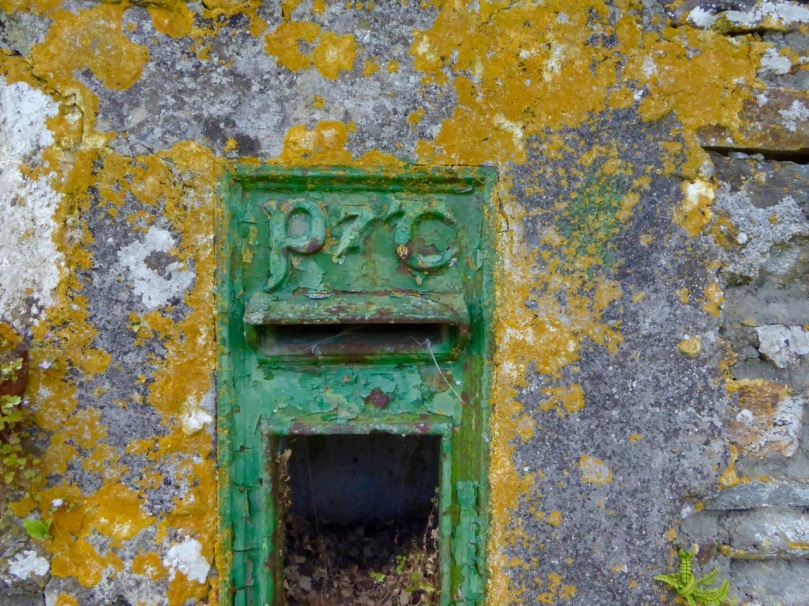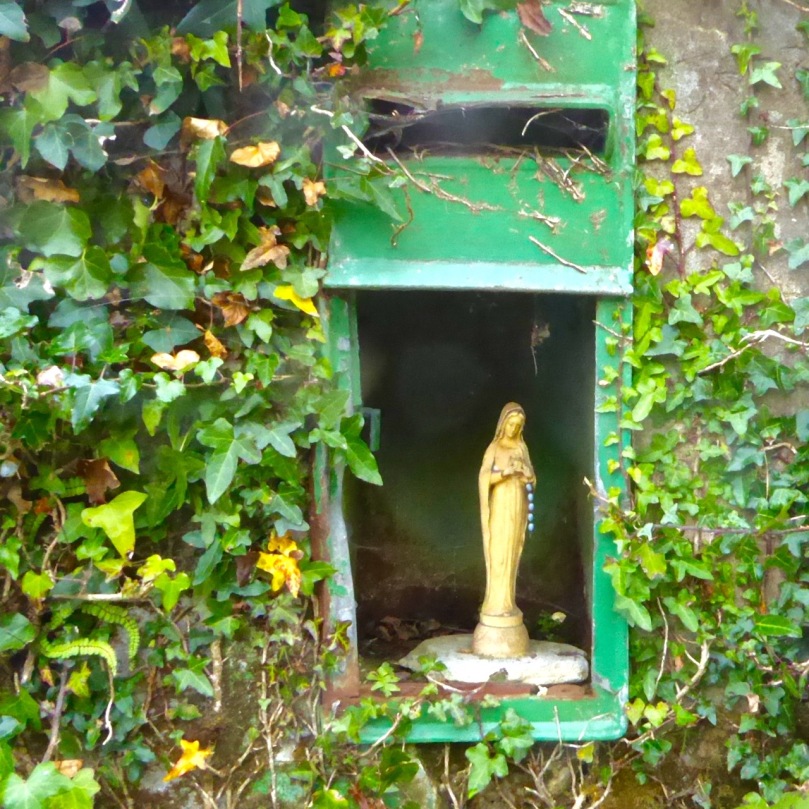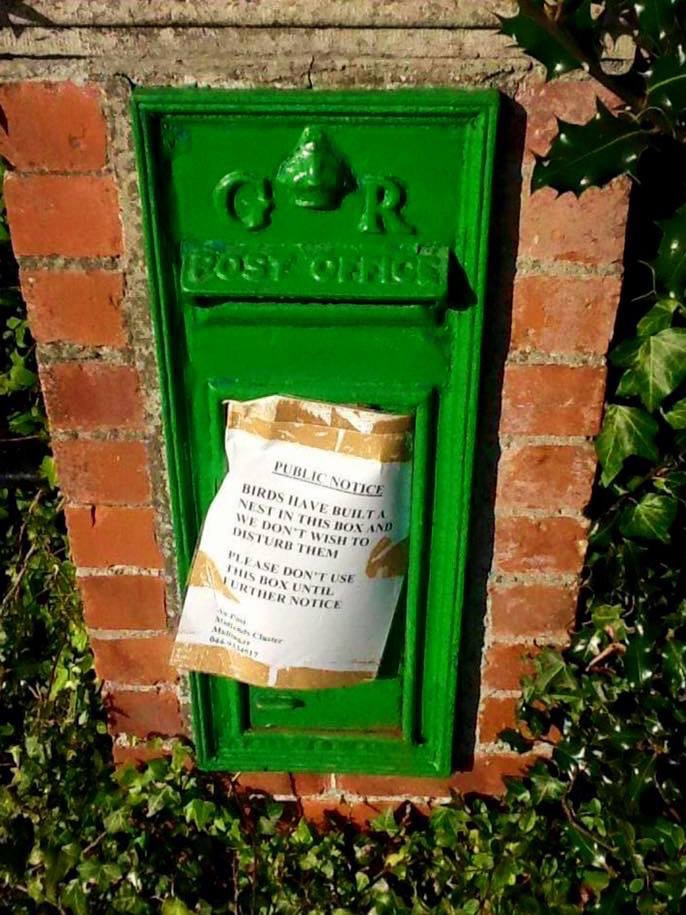-

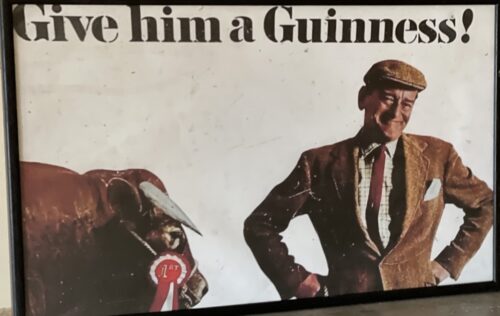 35cm x 57cm Imagination is something Guinness Advertising has never been short of… From John Gilroy’s hapless zookeeper and his menagerie of creatures to a Polynesian surfer and a herd of white horses; from messages in bottles setting sail across the ocean to a single, heart-stoppingly enormous wave. Guinness have been carving out their own creative path for almost a century with decades of extraordinary and enduring print, TV and digital campaigns to their name, and hopefully they will continue to push boundaries to tell stories to the world. Here’s to original thinking !
35cm x 57cm Imagination is something Guinness Advertising has never been short of… From John Gilroy’s hapless zookeeper and his menagerie of creatures to a Polynesian surfer and a herd of white horses; from messages in bottles setting sail across the ocean to a single, heart-stoppingly enormous wave. Guinness have been carving out their own creative path for almost a century with decades of extraordinary and enduring print, TV and digital campaigns to their name, and hopefully they will continue to push boundaries to tell stories to the world. Here’s to original thinking ! -
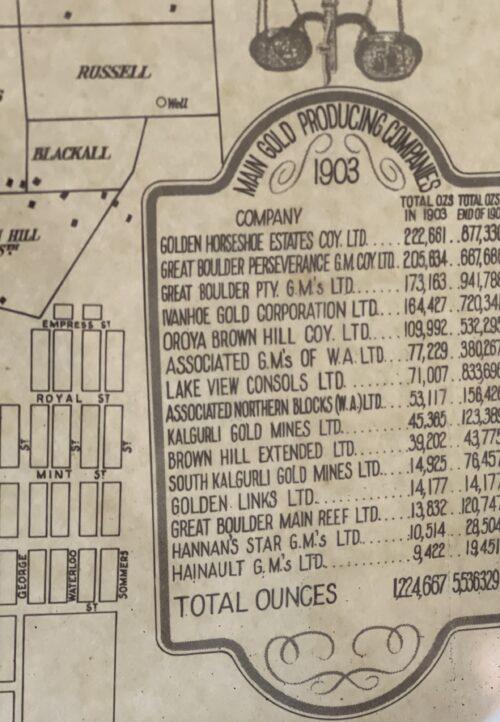
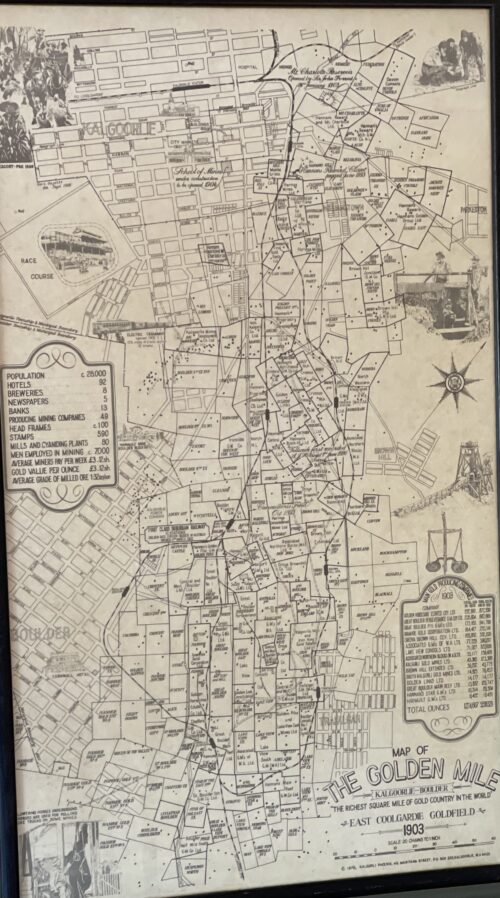 33cm x 57cm In the winter of 1893, prospectors Patrick (Paddy) Hannan, Tom Flanagan, and Dan Shea were travelling to Mount Youle, when one of their horses cast a shoe. During the halt in their journey, the men noticed signs of gold in the area around the foot of what is now the Mount Charlotte gold mine, located on a small hill north of the current city, and decided to stay and investigate. On 17 June 1893, Hannan filed a Reward Claim, leading to hundreds of men swarming to the area in search of gold, and Kalgoorlie, originally called Hannan's Find, was born.The population of the town was 2,018 (1,516 males and 502 females) in 1898. The mining of gold, along with other metals such as nickel, has been a major industry in Kalgoorlie ever since, and today employs about one-quarter of Kalgoorlie's workforce and generates a significant proportion of its income. The concentrated area of large gold mines surrounding the original Hannan's find is often referred to as the Golden Mile, and was sometimes referred to as the world's richest square mile of earth. In 1901, the population of Kalgoorlie was 4,793 (3,087 males and 1,706 females) which increased to 6,790 (3,904 males and 2,886 females) by 1903. The 3 ft 6 in (1,067 mm) narrow-gauge Government Eastern Goldfields Railway line reached Kalgoorlie station in 1896, and the main named railway service from Perth was the overnight sleeper train The Westland, which ran until the 1970s. In 1917, a 4 ft 8+1⁄2 in(1,435 mm) standard gauge railway line was completed, connecting Kalgoorlie to Port Augusta, South Australia, across 2,000 kilometres (1,243 mi) of desert, and consequently the rest of the eastern states. The standardisation of the railway connecting Perth (which changed route from the narrow-gauge route) in 1968 completed the Sydney–Perth railway, making rail travel from Perth to Sydney possible; the Indian Pacific rail service commenced soon after. During the 1890s, the Goldfields area boomed as a whole, with an area population exceeding 200,000, composed mainly of prospectors. The area gained a reputation for being a "wild west", notorious for its bandits and prostitutes. This rapid increase in population and claims of neglect by the state government in Perth led to the proposition of the new state of Auralia, but with the sudden diaspora after the Gold Rush, these plans fell through. Places, famous or infamous, for which Kalgoorlie is noted include its water pipeline, designed by C. Y. O'Connor and bringing in fresh water from Mundaring Weir near Perth, its Hay Street brothels, its two-up school, the goldfields railway loopline, the Kalgoorlie Town Hall, the Paddy Hannan statue/drinking fountain, the Super Pit, and Mount Charlotte lookout. Its main street is Hannan Street, named after the town's founder. One of the infamous brothels also serves as a museum and is a major national attraction. Paddy Hannan was the son of John Hannan and Bridget Lynch, and was baptised on 26 April 1840 in the town of Quin, County Clare, Ireland. His baptismal record shows that his godparents (sponsors) were Margaret Lynch and John O'Brien. Many of the people in his family emigrated to Australia from 1852 onwards, and close ties were maintained. Two of Hannan's nieces would welcome Hannan into their house for the last years of his life. Hannan emigrated to Australia when he was 22, arriving in Melbourne on 23 December 1862 aboard the Henry Fernie from Liverpool. He is recorded in the passenger list as Pat Hannan, a labourer.
33cm x 57cm In the winter of 1893, prospectors Patrick (Paddy) Hannan, Tom Flanagan, and Dan Shea were travelling to Mount Youle, when one of their horses cast a shoe. During the halt in their journey, the men noticed signs of gold in the area around the foot of what is now the Mount Charlotte gold mine, located on a small hill north of the current city, and decided to stay and investigate. On 17 June 1893, Hannan filed a Reward Claim, leading to hundreds of men swarming to the area in search of gold, and Kalgoorlie, originally called Hannan's Find, was born.The population of the town was 2,018 (1,516 males and 502 females) in 1898. The mining of gold, along with other metals such as nickel, has been a major industry in Kalgoorlie ever since, and today employs about one-quarter of Kalgoorlie's workforce and generates a significant proportion of its income. The concentrated area of large gold mines surrounding the original Hannan's find is often referred to as the Golden Mile, and was sometimes referred to as the world's richest square mile of earth. In 1901, the population of Kalgoorlie was 4,793 (3,087 males and 1,706 females) which increased to 6,790 (3,904 males and 2,886 females) by 1903. The 3 ft 6 in (1,067 mm) narrow-gauge Government Eastern Goldfields Railway line reached Kalgoorlie station in 1896, and the main named railway service from Perth was the overnight sleeper train The Westland, which ran until the 1970s. In 1917, a 4 ft 8+1⁄2 in(1,435 mm) standard gauge railway line was completed, connecting Kalgoorlie to Port Augusta, South Australia, across 2,000 kilometres (1,243 mi) of desert, and consequently the rest of the eastern states. The standardisation of the railway connecting Perth (which changed route from the narrow-gauge route) in 1968 completed the Sydney–Perth railway, making rail travel from Perth to Sydney possible; the Indian Pacific rail service commenced soon after. During the 1890s, the Goldfields area boomed as a whole, with an area population exceeding 200,000, composed mainly of prospectors. The area gained a reputation for being a "wild west", notorious for its bandits and prostitutes. This rapid increase in population and claims of neglect by the state government in Perth led to the proposition of the new state of Auralia, but with the sudden diaspora after the Gold Rush, these plans fell through. Places, famous or infamous, for which Kalgoorlie is noted include its water pipeline, designed by C. Y. O'Connor and bringing in fresh water from Mundaring Weir near Perth, its Hay Street brothels, its two-up school, the goldfields railway loopline, the Kalgoorlie Town Hall, the Paddy Hannan statue/drinking fountain, the Super Pit, and Mount Charlotte lookout. Its main street is Hannan Street, named after the town's founder. One of the infamous brothels also serves as a museum and is a major national attraction. Paddy Hannan was the son of John Hannan and Bridget Lynch, and was baptised on 26 April 1840 in the town of Quin, County Clare, Ireland. His baptismal record shows that his godparents (sponsors) were Margaret Lynch and John O'Brien. Many of the people in his family emigrated to Australia from 1852 onwards, and close ties were maintained. Two of Hannan's nieces would welcome Hannan into their house for the last years of his life. Hannan emigrated to Australia when he was 22, arriving in Melbourne on 23 December 1862 aboard the Henry Fernie from Liverpool. He is recorded in the passenger list as Pat Hannan, a labourer.Prospecting success
In 1893 in Western Australia, Hannan and his partners were the first to find gold near Mount Charlotte, less than 40 kilometres from the existing Coolgardie Goldfields. Hannan, Flanagan and Shea were following a large number of prospectors who set out for a rumoured new prospect at Mount Youle. One version of the story of the find has it that on the night of 14 June 1893, Hannan found gold in a gully. Not wanting to cause a rush, he concealed the find. During the night the trio moved one of their horses into the scrub. The following morning Hannan informed the main party they were going to stay behind to find their lost horse. After the main group moved off east, the three men started to pick up the gold and peg out their lease. Amongst the various counter-claims to emerge over the years, one lively version of the story was told in 1909 by Fred Dugan (another prospector, who was present at the time) relating how Thomas Flanagan found the first nuggets, and covered his find with brushwood to conceal it until the following day. By law, those finding "payable" gold were required to report the fact to the warden's office within seven days, so Hannan set off for Coolgardie to register their find, doing so on 17 June 1893. It has been suggested that Hannan, rather than Flanagan or Shea, was chosen to officially register the claim because only he could read and write, but there is evidence that Flanagan was literate, since, in 1864, he had clearly signed the official death certificate of his brother John Flanagan, and had written his own place of residence at the time - White Hills (in Bendigo, Victoria, Australia). The other possible reasons for Hannan going alone to the office at Coolgardie are set out by Martyn Webb,who relates that:The fact that Flanagan and Shea were able to secure another 100 ounces while Hannan was away registering their claim at Coolgardie might help to explain why Hannan was chosen ... simply because they were better at specking than he was – it needs good eyesight. On the other hand, since the journey was arduous and had to be done as quickly as possible, Hannan might have been chosen because, as Uren and others suggest, he was the youngest and the fittest of the three. … The most likely reason … was that he was the undisputed leader of the party.
Hannan registered the claim in Flanagan's name as well as his own. Within hours a stampede began. It was estimated that about 400 men were prospecting in the area within three days, and over 1,000 within a week.— Webb, p. 103Final years
In 1904, at the age of sixty-four, Hannan was granted an annual pension of £150 by the Government of Western Australia. Having searched for gold throughout his adult life, he did not cease his prospecting activities until after 1910, his seventieth year. At that time he went to live with two of his nieces in Fallon Street, Brunswick, Victoria (close to the city of Melbourne). He died there in 1925 and was buried in Melbourne Central Cemetery, in the Catholic section, near the North Gate. In 1993 his grave was restored by the citizens of Kalgoorlie, led by Tess Thomson, as a part of the celebration of the 100-year anniversary of the original find by Hannan, Flanagan and Shea.Legacy
In memory of a man who is regarded as the founder of Kalgoorlie, the main street and a suburb in Kalgoorlie both bear Hannan's name, and in 1929 a statue of him by the sculptor John MacLeod was erected there. The city boasts several commemorative plaques to the three Irishmen, Hannan, Flanagan and Shea. A popular Irish pub at the Burswood Entertainment Complex was also named after Hannan. In Ireland there is a plaque dedicated to his memory opposite Quin Abbey, Quin, County Clare, and there is a bust with an explanatory dedication on display inside the DeValera Library in Ennis, County Clare. -
Out of stock

 Power's Pure Pot Still Whiskey Mirror. 70cm x 38cm In 1791 James Power, an innkeeper from Dublin, established a small distillery at his public house at 109 Thomas St., Dublin. The distillery, which had an output of about 6,000 gallons in its first year of operation, initially traded as James Power and Son, but by 1822 had become John Power & Son, and had moved to a new premises at John's Lane, a side street off Thomas Street. At the time the distillery had three pot stills, though only one, a 500-gallon still is thought to have been in use. Following reform of the distilling laws in 1823, the distillery expanded rapidly. In 1827, production was reported at 160,270 gallons,and by 1833 had grown to 300,000 gallons per annum. As the distillery grew, so too did the stature of the family. In 1841, John Power, grandson of the founder was awarded a baronet, a hereditary title. In 1855, his son Sir James Power, laid the foundation stone for the O'Connell Monument, and in 1859 became High Sheriff of Dublin. In 1871, the distillery was expanded and rebuilt in the Victorian style, becoming one of the most impressive sights in Dublin.After expansion, output at the distillery rose to 700,000 gallons per annum, and by the 1880s, had reached about 900,000 gallons per annum, at which point the distillery covered over six acres of central Dublin, and had a staff of about 300 people.During this period, when the Dublin whiskey distilleries were amongst the largest in the world, the family run firms of John Powers, along with John Jameson, William Jameson, and George Roe, (collectively known as the "Big Four") came to dominate the Irish distilling landscape, introducing several innovations. In 1886, John Power & Son began bottling their own whiskey, rather than following the practice customary at the time, of selling whiskey directly to merchants and bonders who would bottle it themselves. They were the first Dublin distillery to do so, and one of the first in the world.A gold label adorned each bottle and it was from these that the whiskey got the name Powers Gold Label. When Alfred Barnard, the British historian visited John's Lane in the late 1880s, he noted the elegance and cleanliness of the buildings, and the modernity of the distillery, describing it as "about as complete a work as it is possible to find anywhere". At the time of his visit, the distillery was home to five pot stills, two of which with capacities of 25,000 gallons, were amongst the largest ever built.In addition, Barnard was high in his praise for Powers whiskey, noting:"The old make, which we drank with our luncheon was delicious and finer than anything we had hitherto tasted.It was as perfect in flavour, and as pronounced in the ancient aroma of Irish Whiskey so dear to to the hearts of connoisseurs,as one could possibly desire and we found a small flask of it very useful afterwards on our travels." The last member of the family to sit on the board was Sir Thomas Talbot Power,who died in 1930,and with him the Power's Baronetcy. However, ownership remained in the family until 1966, and several descendants of his sisters remained at work with the company until recent times. In 1961, a Coffey still was installed in John's Lane Distillery, allowing the production of vodka and gin, in addition to the testing of grain whiskey for use in blended whiskey. This was a notable departure for the firm, as for many years the big Dublin distilling dynasties had shunned the use of Coffey stills, questioning if their output, grain whiskey could even be termed whiskey. However, with many of the Irish distilleries having closed in the early 20th century in part due to their failure to embrace a change in consumer preference towards blended whiskey, Powers were instrumental in convincing the remaining Irish distilleries to reconsider their stance on blended whiskey. In 1966, with the Irish whiskey industry still struggling following Prohibition in the United States, the Anglo-Irish Trade War and the rise of competition from Scotch whiskey, John Powers & Son joined forces with the only other remaining distillers in the Irish Republic, the Cork Distilleries Company and their Dublin rivals John Jameson & Son, to form Irish Distillers. Soon after, in a bold move, Irish Distillers decided to close all of their existing distilleries, and to consolidate production at a new purpose-built facility in Midleton (the New Midleton Distillery) alongside their existing Old Midleton Distillery. The new distillery opened in 1975, and a year later, production ceased at John's Lane Distillery and began anew in Cork, with Powers Gold Label and many other Irish whiskeys reformulated from single pot stills whiskeys to blends. In 1989, Irish Distillers itself became a subsidiary of Pernod-Ricard following a friendly takeover.Since the closure of the John's Lane distillery, many of the distillery buildings were demolished. However, some of the buildings have been incorporated into the National College of Art and Design, and are now protected structures. In addition, three of the distillery's pot stills were saved and now located in the college's Red Square. Origins : Dublin City Dimensions : 100cm x 70cm 20kg (specially constructed damage proof shipping container)
Power's Pure Pot Still Whiskey Mirror. 70cm x 38cm In 1791 James Power, an innkeeper from Dublin, established a small distillery at his public house at 109 Thomas St., Dublin. The distillery, which had an output of about 6,000 gallons in its first year of operation, initially traded as James Power and Son, but by 1822 had become John Power & Son, and had moved to a new premises at John's Lane, a side street off Thomas Street. At the time the distillery had three pot stills, though only one, a 500-gallon still is thought to have been in use. Following reform of the distilling laws in 1823, the distillery expanded rapidly. In 1827, production was reported at 160,270 gallons,and by 1833 had grown to 300,000 gallons per annum. As the distillery grew, so too did the stature of the family. In 1841, John Power, grandson of the founder was awarded a baronet, a hereditary title. In 1855, his son Sir James Power, laid the foundation stone for the O'Connell Monument, and in 1859 became High Sheriff of Dublin. In 1871, the distillery was expanded and rebuilt in the Victorian style, becoming one of the most impressive sights in Dublin.After expansion, output at the distillery rose to 700,000 gallons per annum, and by the 1880s, had reached about 900,000 gallons per annum, at which point the distillery covered over six acres of central Dublin, and had a staff of about 300 people.During this period, when the Dublin whiskey distilleries were amongst the largest in the world, the family run firms of John Powers, along with John Jameson, William Jameson, and George Roe, (collectively known as the "Big Four") came to dominate the Irish distilling landscape, introducing several innovations. In 1886, John Power & Son began bottling their own whiskey, rather than following the practice customary at the time, of selling whiskey directly to merchants and bonders who would bottle it themselves. They were the first Dublin distillery to do so, and one of the first in the world.A gold label adorned each bottle and it was from these that the whiskey got the name Powers Gold Label. When Alfred Barnard, the British historian visited John's Lane in the late 1880s, he noted the elegance and cleanliness of the buildings, and the modernity of the distillery, describing it as "about as complete a work as it is possible to find anywhere". At the time of his visit, the distillery was home to five pot stills, two of which with capacities of 25,000 gallons, were amongst the largest ever built.In addition, Barnard was high in his praise for Powers whiskey, noting:"The old make, which we drank with our luncheon was delicious and finer than anything we had hitherto tasted.It was as perfect in flavour, and as pronounced in the ancient aroma of Irish Whiskey so dear to to the hearts of connoisseurs,as one could possibly desire and we found a small flask of it very useful afterwards on our travels." The last member of the family to sit on the board was Sir Thomas Talbot Power,who died in 1930,and with him the Power's Baronetcy. However, ownership remained in the family until 1966, and several descendants of his sisters remained at work with the company until recent times. In 1961, a Coffey still was installed in John's Lane Distillery, allowing the production of vodka and gin, in addition to the testing of grain whiskey for use in blended whiskey. This was a notable departure for the firm, as for many years the big Dublin distilling dynasties had shunned the use of Coffey stills, questioning if their output, grain whiskey could even be termed whiskey. However, with many of the Irish distilleries having closed in the early 20th century in part due to their failure to embrace a change in consumer preference towards blended whiskey, Powers were instrumental in convincing the remaining Irish distilleries to reconsider their stance on blended whiskey. In 1966, with the Irish whiskey industry still struggling following Prohibition in the United States, the Anglo-Irish Trade War and the rise of competition from Scotch whiskey, John Powers & Son joined forces with the only other remaining distillers in the Irish Republic, the Cork Distilleries Company and their Dublin rivals John Jameson & Son, to form Irish Distillers. Soon after, in a bold move, Irish Distillers decided to close all of their existing distilleries, and to consolidate production at a new purpose-built facility in Midleton (the New Midleton Distillery) alongside their existing Old Midleton Distillery. The new distillery opened in 1975, and a year later, production ceased at John's Lane Distillery and began anew in Cork, with Powers Gold Label and many other Irish whiskeys reformulated from single pot stills whiskeys to blends. In 1989, Irish Distillers itself became a subsidiary of Pernod-Ricard following a friendly takeover.Since the closure of the John's Lane distillery, many of the distillery buildings were demolished. However, some of the buildings have been incorporated into the National College of Art and Design, and are now protected structures. In addition, three of the distillery's pot stills were saved and now located in the college's Red Square. Origins : Dublin City Dimensions : 100cm x 70cm 20kg (specially constructed damage proof shipping container) The Still House at John's Lane Distillery, as it looked when Alfred Barnard visited in the 1800s.
The Still House at John's Lane Distillery, as it looked when Alfred Barnard visited in the 1800s.
-
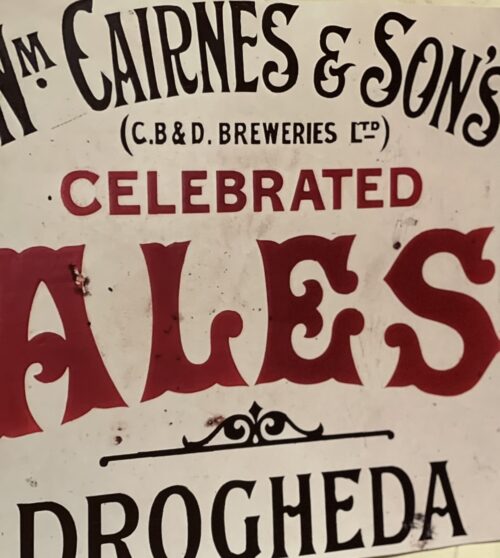
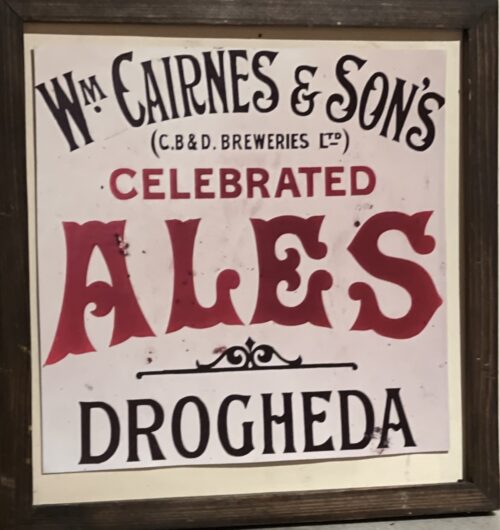 30cm x 30cm ANOTHER great industry on the Scotch Hall site was the brewing firm of Cairnes Ltd, one of the original firms of Irish brewers dating back to 1772 with the foundation of the Castlebellingham Brewery at the picturesque Co Louth village of that name.In 1825, William Cairnes, who was related by marriage to the owners of the ’Bellingham brewery, founded the brewery at Marsh Road, Drogheda, which, for over 150 years, gave employment to almost 200 workers and the firm was famous for its ales and stout. In 1889 the interests of the two breweries were pooled, a public company being formed under the title of the Castlebellingham and Drogheda Breweries Ltd. This title was changed for brevity in 1933 to Cairnes Ltd. For a good many years subsequent to the merger, the breweries were worked independently, each supplying its own customers throughout Ireland and abroad. However, in 1923, it was considered advisable to concentrate brewing in Drogheda, owing to the more advantageous position of the town, and the brewing plant and premises there, were more extensive. Actually the plant at Drogheda was one of the most up-to-date in Ireland and compared very favourably with that of breweries in England and Wales. The supply of brewing water was obtained from a 400ft deep artesian well on the company’s premises. (I wonder if it is still there) and this water was used with the choicest hops and malt made from the best Irish barley obtainable. The hops used came chiefly from Kent and when obtainable, a percentage came from the USA. The process through which the barley went from its arrival in the brewery until it emerged as ale or stout, was extremely interesting and quaint. The barley was first dried to a consistent level of moisture content and then stored for a few weeks before being steeped. It was then ‘floored’ on lots which the brewery had, as well as lofts in Dominic Street and Wellington Quay. These have, in recent years, been converted into shops and a high rise apartment block. Here on these lofts the growing process of the barley in the ground was artificially repeated, the growth however being terminated at the desired stage. The barley was then kilned and cured before being ground and mashed with hot water and the liquid was drawn off. It was then run to built-in coppers, where hops was added, then boiled, the wort, as it was called, being subsequently strained from the hops, cooled and fermented. The final stage was when the beer was casked (in wooden barrels) and matured.
30cm x 30cm ANOTHER great industry on the Scotch Hall site was the brewing firm of Cairnes Ltd, one of the original firms of Irish brewers dating back to 1772 with the foundation of the Castlebellingham Brewery at the picturesque Co Louth village of that name.In 1825, William Cairnes, who was related by marriage to the owners of the ’Bellingham brewery, founded the brewery at Marsh Road, Drogheda, which, for over 150 years, gave employment to almost 200 workers and the firm was famous for its ales and stout. In 1889 the interests of the two breweries were pooled, a public company being formed under the title of the Castlebellingham and Drogheda Breweries Ltd. This title was changed for brevity in 1933 to Cairnes Ltd. For a good many years subsequent to the merger, the breweries were worked independently, each supplying its own customers throughout Ireland and abroad. However, in 1923, it was considered advisable to concentrate brewing in Drogheda, owing to the more advantageous position of the town, and the brewing plant and premises there, were more extensive. Actually the plant at Drogheda was one of the most up-to-date in Ireland and compared very favourably with that of breweries in England and Wales. The supply of brewing water was obtained from a 400ft deep artesian well on the company’s premises. (I wonder if it is still there) and this water was used with the choicest hops and malt made from the best Irish barley obtainable. The hops used came chiefly from Kent and when obtainable, a percentage came from the USA. The process through which the barley went from its arrival in the brewery until it emerged as ale or stout, was extremely interesting and quaint. The barley was first dried to a consistent level of moisture content and then stored for a few weeks before being steeped. It was then ‘floored’ on lots which the brewery had, as well as lofts in Dominic Street and Wellington Quay. These have, in recent years, been converted into shops and a high rise apartment block. Here on these lofts the growing process of the barley in the ground was artificially repeated, the growth however being terminated at the desired stage. The barley was then kilned and cured before being ground and mashed with hot water and the liquid was drawn off. It was then run to built-in coppers, where hops was added, then boiled, the wort, as it was called, being subsequently strained from the hops, cooled and fermented. The final stage was when the beer was casked (in wooden barrels) and matured. -


The first act of the Irish Free State after independence was to paint all the post boxes throughout the country green. It was a brilliant stroke – royal red replaced by emerald green in one of the most visible and ubiquitous symbols of national administration.
The Penfold post box in Skibbereen, one of only a handful left in Ireland
Ironically, the post boxes themselves did not change, so the royal insignias were simply over-painted by the new colour. The result was a charming mixture of tradition and adaptation that serves as an ongoing reminder of the history of Ireland and its institutions.

Special stamps issued by the Royal Mail in 2015 to celebrate the bicentenary of the birth of Anthony Trollope
The first post boxes were introduced to Ireland in the 1850s by the novelist Anthony Trollope, then a Surveyor for the Post Office. Trollope was happy in Ireland and wrote several novels and stories set here, although they are not the works for which he is most remembered.
We don’t usually think of Anthony Trollope as an Irish novelist but he lived here for almost 20 years, spent working for the Post Office and writing
One of the earliest models for a free-standing post box came to be known as the Penfold, after its designer, J W Penfold. They were manufactured and deployed from 1866 to 1879 and very few have survived in Ireland to this day – only six are known and of these only three are still in operation. Skibbereen has one of those, and very fine it is: one hundred and fifty years old and still in daily use!
The hexagonal Penfold designed was apparently inspired by the Temple of the Winds in Athens (although the Temple is octagonal), with the addition of an acanthus leaf on the cap and a smart bud-shaped finial and beading.

Photograph of the Temple of the Winds from Wikipedia
Our Skibbereen Penfold is in excellent condition: note the royal insignia and the entwined VR for Victoria Regina.
The Penfolds were replaced by round pillar boxes because there were too many complaints that the hexagonal design caused letters to stick. These cylindrical boxes can be seen everywhere in Ireland still, although mostly in towns and cities. The one below is on Grand Parade in Cork.
In his book The Irish Post Box, which I gratefully acknowledge as the source of much of the information in this blog post, Stephen Ferguson describes the three main types of post boxes that have been developed for use in Ireland: pillar, wall and lamp. In rural areas, such as West Cork, wall and lamp boxes are the most common forms I have encountered.
Here’s a representative wall box in Skibbereen. Interestingly, it’s part of a mini-complex of historical markers including the plaque to the Clerke sisters (see my posts From Skibbereen to the Moon Part 1 and Part 2 for more about these remarkable women and their family) and signs for the Skibbereen heritage walking trail, all mounted together on the wall of what was the main bank in Skibbereen during the Famine period.
The box was manufactured by W T Allen and Co of London and bears the ornately scrolled insignia and crown of Edward the VII, which places it between 1901 to 1910.
Here’s another nice one in Bantry, a Victorian one, although this time the VR lettering is simpler than on the Penfold. This one has been painted so often that the embossed POST OFFICE on the protective hood has almost disappeared under the layers.
Lamp boxes were designed for remote areas where a suitable wall might not be readily available. Ferguson explains:
Lamp post boxes, based on a design used by the United States Postal Service, were first introduced in 1896 in London as a response to calls for more post boxes throughout the city. Affixed to a street lamp, the boxes were used at locations where the expense of a pillar or wall box could not be justified. In Ireland, however, they were often deployed in rural areas where, attached to a telegraph or specially erected pole by metal clips, they were very useful in extending postal collections to remote and sparsely populated regions. Tucked under hedges or used sometimes as a smaller version of a wall box, these post boxes were relatively cheap to make and easy to install and they symbolise…the extraordinary influence and reach of the Post Office as an institution at the height of its powers.
Driving or walking around rural Ireland, look out for ‘lamp’ boxes. Here’s one from the road near Barley Cove.
 A closer inspection reveals this one bears the P & T logo that was in use between 1939 and 1984, before it was replaced by the brand ‘An Post’. Sometimes the old royal initials were ground off the boxes, or sometimes the doors were replaced with new ones bearing the P&T lettering, but it seems that considerations of cost (always paramount with the careful Post Office) allowed many to simply remain in place as they were. In the early years of the new state, some were embossed with the Saorstát Éireann logo (even sharing the door with a VR insignia) but that practice was relatively short lived and I have found no examples to it yet in West Cork. The website Irish Postal History has this example from Washington Street in Cork.
A closer inspection reveals this one bears the P & T logo that was in use between 1939 and 1984, before it was replaced by the brand ‘An Post’. Sometimes the old royal initials were ground off the boxes, or sometimes the doors were replaced with new ones bearing the P&T lettering, but it seems that considerations of cost (always paramount with the careful Post Office) allowed many to simply remain in place as they were. In the early years of the new state, some were embossed with the Saorstát Éireann logo (even sharing the door with a VR insignia) but that practice was relatively short lived and I have found no examples to it yet in West Cork. The website Irish Postal History has this example from Washington Street in Cork.On Cape Clear – the most scenic post box in Ireland?
If no lamp post or suitable pole existed, a simple stake was erected to which a box could be attached. Cape Clear Island didn’t get electricity until the 1970s, so this post box (above and below) must predate the advent of poles. The logo, however, is that of An Post, which was established as the new brand in 1984. Perhaps the poles were only erected island-wide after the submarine cable was laid in the 1990s.
Not all mail boxes have been retained for active use – so what happens to them? Many simply remain in situ, as a picturesque reminder of times when we actually wrote to each other instead of texting or emailing. The one below at Rossbrin, near Ballydehob, was once attached to the wall outside the old schoolhouse. The first photograph at the start of today’s post shows its location.
And this one, at Ahakista, has been repurposed as a wayside shrine.
But even if it’s still in use, sometimes a mail boxes can’t be used for its real purpose, but has more important work to do! I don’t know where this last photograph was taken or whose work this is – it was widely circulated on the internet – but I would be happy to credit the photographer if I knew who it was. Delighted to have this also as an example of a post box from the reign of George V, 1910 to 1936.
-

 Beautiful artwork depicting the ultra talented but ill fated Derby Winner Shergar. Origins :Naas Co Kildare. Dimensions: 60cm x 70cm Glazed Shergar was an Irish-bred, British-trained Thoroughbred racehorse. After a very successful season in 1981 he was retired to the Ballymany Stud in County Kildare, Ireland. In 1983 he was stolen from the stud, and a ransom of £2 million was demanded; it was not paid, and negotiations were soon broken off by the thieves. In 1999 a supergrass, formerly in the Provisional Irish Republican Army (IRA), stated they stole the horse. The IRA has never admitted any role in the theft. The Aga Khan, Shergar's owner, sent the horse for training in Britain in 1979 and 1980. Shergar began his first season of racing in September 1980 and ran two races that year, where he won one and came second in the other. In 1981 he ran in six races, winning five of them. In June that year he won the 202nd Epsom Derby by ten lengths—the longest winning margin in the race's history. Three weeks later he won the Irish Sweeps Derby by four lengths; a month after that he won the King George VI and Queen Elizabeth Stakes by four lengths. In his final race of the year he came in fourth, and the Aga Khan took the decision to retire him to stud in Ireland. After Shergar's Epsom Derby win, the Aga Khan sold 40 shares in the horse, valuing it at £10 million. Retaining six shares, he created an owners' syndicate with the remaining 34 members. Shergar was stolen from the Aga Khan's stud farm by an armed gang on 8 February 1983. Negotiations were conducted with the thieves, but the gang broke off all communication after four days when the syndicate did not accept as true the proof provided that the horse was still alive. In 1999 Sean O'Callaghan, a former member of the IRA, published details of the theft and stated that it was an IRA operation to raise money for arms. He said that very soon after the theft, Shergar had panicked and damaged his leg, which led to him being killed by the gang. An investigation by The Sunday Telegraph concluded that the horse was shot four days after the theft. No arrests have ever been made in relation to the theft. Shergar's body has never been recovered or identified; it is likely that the body was buried near Aughnasheelin, near Ballinamore, County Leitrim. In honour of Shergar, the Shergar Cup was inaugurated in 1999. His story has been made into two screen dramatisations, several books and two documentaries.
Beautiful artwork depicting the ultra talented but ill fated Derby Winner Shergar. Origins :Naas Co Kildare. Dimensions: 60cm x 70cm Glazed Shergar was an Irish-bred, British-trained Thoroughbred racehorse. After a very successful season in 1981 he was retired to the Ballymany Stud in County Kildare, Ireland. In 1983 he was stolen from the stud, and a ransom of £2 million was demanded; it was not paid, and negotiations were soon broken off by the thieves. In 1999 a supergrass, formerly in the Provisional Irish Republican Army (IRA), stated they stole the horse. The IRA has never admitted any role in the theft. The Aga Khan, Shergar's owner, sent the horse for training in Britain in 1979 and 1980. Shergar began his first season of racing in September 1980 and ran two races that year, where he won one and came second in the other. In 1981 he ran in six races, winning five of them. In June that year he won the 202nd Epsom Derby by ten lengths—the longest winning margin in the race's history. Three weeks later he won the Irish Sweeps Derby by four lengths; a month after that he won the King George VI and Queen Elizabeth Stakes by four lengths. In his final race of the year he came in fourth, and the Aga Khan took the decision to retire him to stud in Ireland. After Shergar's Epsom Derby win, the Aga Khan sold 40 shares in the horse, valuing it at £10 million. Retaining six shares, he created an owners' syndicate with the remaining 34 members. Shergar was stolen from the Aga Khan's stud farm by an armed gang on 8 February 1983. Negotiations were conducted with the thieves, but the gang broke off all communication after four days when the syndicate did not accept as true the proof provided that the horse was still alive. In 1999 Sean O'Callaghan, a former member of the IRA, published details of the theft and stated that it was an IRA operation to raise money for arms. He said that very soon after the theft, Shergar had panicked and damaged his leg, which led to him being killed by the gang. An investigation by The Sunday Telegraph concluded that the horse was shot four days after the theft. No arrests have ever been made in relation to the theft. Shergar's body has never been recovered or identified; it is likely that the body was buried near Aughnasheelin, near Ballinamore, County Leitrim. In honour of Shergar, the Shergar Cup was inaugurated in 1999. His story has been made into two screen dramatisations, several books and two documentaries. -

 Nobody said it was going to be easy Guinness Hurling advert from the 90s. Dromkeen Co Limerick Dimensions : 54cm x 100cm " It was not until 1994 that the GAA decided that the football championship would benefit from bringing on a title sponsor in Bank of Ireland. Although an equivalent offer had been on the table for the hurling championship, Central Council pushed the plate away.Though the name of the potential sponsor wasn’t explicitly made public, everyone knew it was Guinness. More to the point, everyone knew why Central Council wouldn’t bite. As Mulvihill himself noted in his report to Congress, the offer was declined on the basis that “Central Council did not want an alcoholic drinks company associated with a major GAA competition”. As it turned out, Central Council had been deadlocked on the issue and it was the casting vote of then president Peter Quinn that put the kibosh on a deal with Guinness. Mulvihill’s disappointment was far from hidden, since he saw the wider damage caused by turning up the GAA nose at Guinness’s advances. “The unfortunate aspect of the situation,” he wrote, “is that hurling needs support on the promotion of the game much more than football.” Though it took the point of a bayonet to make them go for it, the GAA submitted in the end and on the day after the league final in 1995 , a three-year partnership with Guinness was announced. The deal would be worth £1 million a year, with half going to the sport and half going to the competition in the shape of marketing. That last bit was key. Guinness came up with a marketing campaign that fairly scorched across the general consciousness. Billboards screeched out slogans that feel almost corny at this remove but made a huge impact at the same time . This man can level whole counties in one second flat. This man can reach speeds of 100mph. This man can break hearts at 70 yards Its been Hell for Leather. Of course, all the marketing in the world can only do so much. Without a story to go alongside, the Guinness campaign might be forgotten now – or worse, remembered as an overblown blast of hot air dreamed up in some modish ad agency above in Dublin.Until the Clare hurlers came along and changed everything." Malachy Clerkin Irish Times GAA Correspondent Arthur Guinness started brewing ales in 1759 at the St James Gate Brewery,Dublin.On 31st December 1759 he signed a 9,000 year lease at £45 per annum for the unused brewery.Ten years later, on 19 May 1769, Guinness first exported his ale: he shipped six-and-a-half barrels to Great Britain before he started selling the dark beer porter in 1778. The first Guinness beers to use the term were Single Stout and Double Stout in the 1840s.Throughout the bulk of its history, Guinness produced only three variations of a single beer type: porter or single stout, double or extra and foreign stout for export. “Stout” originally referred to a beer’s strength, but eventually shifted meaning toward body and colour.Porter was also referred to as “plain”, as mentioned in the famous refrain of Flann O’Brien‘s poem “The Workman’s Friend”: “A pint of plain is your only man.” Already one of the top-three British and Irish brewers, Guinness’s sales soared from 350,000 barrels in 1868 to 779,000 barrels in 1876.In October 1886 Guinness became a public company, and was averaging sales of 1,138,000 barrels a year. This was despite the brewery’s refusal to either advertise or offer its beer at a discount. Even though Guinness owned no public houses, the company was valued at £6 million and shares were twenty times oversubscribed, with share prices rising to a 60 per cent premium on the first day of trading. The breweries pioneered several quality control efforts. The brewery hired the statistician William Sealy Gosset in 1899, who achieved lasting fame under the pseudonym “Student” for techniques developed for Guinness, particularly Student’s t-distribution and the even more commonly known Student’s t-test. By 1900 the brewery was operating unparalleled welfare schemes for its 5,000 employees. By 1907 the welfare schemes were costing the brewery £40,000 a year, which was one-fifth of the total wages bill. The improvements were suggested and supervised by Sir John Lumsden. By 1914, Guinness was producing 2,652,000 barrels of beer a year, which was more than double that of its nearest competitor Bass, and was supplying more than 10 per cent of the total UK beer market. In the 1930s, Guinness became the seventh largest company in the world. Before 1939, if a Guinness brewer wished to marry a Catholic, his resignation was requested. According to Thomas Molloy, writing in the Irish Independent, “It had no qualms about selling drink to Catholics but it did everything it could to avoid employing them until the 1960s.” Guinness thought they brewed their last porter in 1973. In the 1970s, following declining sales, the decision was taken to make Guinness Extra Stout more “drinkable”. The gravity was subsequently reduced, and the brand was relaunched in 1981. Pale malt was used for the first time, and isomerized hop extract began to be used. In 2014, two new porters were introduced: West Indies Porter and Dublin Porter. Guinness acquired the Distillers Company in 1986.This led to a scandal and criminal trialconcerning the artificial inflation of the Guinness share price during the takeover bid engineered by the chairman, Ernest Saunders. A subsequent £5.2 million success fee paid to an American lawyer and Guinness director, Tom Ward, was the subject of the case Guinness plc v Saunders, in which the House of Lords declared that the payment had been invalid. In the 1980s, as the IRA’s bombing campaign spread to London and the rest of Britain, Guinness considered scrapping the Harp as its logo. The company merged with Grand Metropolitan in 1997 to form Diageo. Due to controversy over the merger, the company was maintained as a separate entity within Diageo and has retained the rights to the product and all associated trademarks of Guinness.The Guinness brewery in Park Royal, London closed in 2005. The production of all Guinness sold in the UK and Ireland was moved to St. James’s Gate Brewery, Dublin. Guinness has also been referred to as “that black stuff”. Guinness had a fleet of ships, barges and yachts. The Irish Sunday Independent newspaper reported on 17 June 2007 that Diageo intended to close the historic St James’s Gate plant in Dublin and move to a greenfield site on the outskirts of the city.This news caused some controversy when it was announced.The following day, the Irish Daily Mail ran a follow-up story with a double page spread complete with images and a history of the plant since 1759. Initially, Diageo said that talk of a move was pure speculation but in the face of mounting speculation in the wake of the Sunday Independent article, the company confirmed that it is undertaking a “significant review of its operations”. This review was largely due to the efforts of the company’s ongoing drive to reduce the environmental impact of brewing at the St James’s Gate plant. On 23 November 2007, an article appeared in the Evening Herald, a Dublin newspaper, stating that the Dublin City Council, in the best interests of the city of Dublin, had put forward a motion to prevent planning permission ever being granted for development of the site, thus making it very difficult for Diageo to sell off the site for residential development. On 9 May 2008, Diageo announced that the St James’s Gate brewery will remain open and undergo renovations, but that breweries in Kilkenny and Dundalk will be closed by 2013 when a new larger brewery is opened near Dublin. The result will be a loss of roughly 250 jobs across the entire Diageo/Guinness workforce in Ireland.Two days later, the Sunday Independent again reported that Diageo chiefs had met with Tánaiste Mary Coughlan, the deputy leader of the Government of Ireland, about moving operations to Ireland from the UK to benefit from its lower corporation tax rates. Several UK firms have made the move in order to pay Ireland’s 12.5 per cent rate rather than the UK’s 28 per cent rate. Diageo released a statement to the London stock exchange denying the report.Despite the merger that created Diageo plc in 1997, Guinness has retained its right to the Guinness brand and associated trademarks and thus continues to trade under the traditional Guinness name despite trading under the corporation name Diageo for a brief period in 1997. In November 2015 it was announced that Guinness are planning to make their beer suitable for consumption by vegetarians and vegans by the end of 2016 through the introduction of a new filtration process at their existing Guinness Brewery that avoids the need to use isinglass from fish bladders to filter out yeast particles.This went into effect in 2017, per the company’s FAQ webpage where they state: “Our new filtration process has removed the use of isinglass as a means of filtration and vegans can now enjoy a pint of Guinness. All Guinness Draught in keg format is brewed without using isinglass. Full distribution of bottle and can formats will be in place by the end of 2017, so until then, our advice to vegans is to consume the product from the keg format only for now. Guinness stout is made from water, barley, roast malt extract, hops, and brewer’s yeast. A portion of the barley is roasted to give Guinness its dark colour and characteristic taste. It is pasteurisedand filtered. Until the late 1950s Guinness was still racked into wooden casks. In the late 1950s and early 1960s, Guinness ceased brewing cask-conditioned beers and developed a keg brewing system with aluminium kegs replacing the wooden casks; these were nicknamed “iron lungs”.Until 2016 the production of Guinness, as with many beers, involved the use of isinglass made from fish. Isinglass was used as a fining agent for settling out suspended matter in the vat. The isinglass was retained in the floor of the vat but it was possible that minute quantities might be carried over into the beer. Diageo announced in February 2018 that the use of isinglass in draught Guinness was to be discontinued and an alternative clarification agent would be used instead. This has made draught Guinness acceptable to vegans and vegetarians. Arguably its biggest change to date, in 1959 Guinness began using nitrogen, which changed the fundamental texture and flavour of the Guinness of the past as nitrogen bubbles are much smaller than CO2, giving a “creamier” and “smoother” consistency over a sharper and traditional CO2 taste. This step was taken after Michael Ash – a mathematician turned brewer – discovered the mechanism to make this possible. Nitrogen is less soluble than carbon dioxide, which allows the beer to be put under high pressure without making it fizzy. High pressure of the dissolved gas is required to enable very small bubbles to be formed by forcing the draught beer through fine holes in a plate in the tap, which causes the characteristic “surge” (the widget in cans and bottles achieves the same effect). This “widget” is a small plastic ball containing the nitrogen. The perceived smoothness of draught Guinness is due to its low level of carbon dioxide and the creaminess of the head caused by the very fine bubbles that arise from the use of nitrogen and the dispensing method described above. “Foreign Extra Stout” contains more carbon dioxide, causing a more acidic taste. Contemporary Guinness Draught and Extra Stout are weaker than they were in the 19th century, when they had an original gravity of over 1.070. Foreign Extra Stout and Special Export Stout, with abv of 7.5% and 9% respectively, are perhaps closest to the original in character.Although Guinness may appear to be black, it is officially a very dark shade of ruby. The most recent change in alcohol content from the Import Stout to the Extra Stout was due to a change in distribution through North American market. Consumer complaints have influenced recent distribution and bottle changes. Studies claim that Guinness can be beneficial to the heart. Researchers found that “‘antioxidantcompounds’ in the Guinness, similar to those found in certain fruits and vegetables, are responsible for the health benefits because they slow down the deposit of harmful cholesterol on the artery walls.”Guinness ran an advertising campaign in the 1920s which stemmed from market research – when people told the company that they felt good after their pint, the slogan, created by Dorothy L. Sayers–”Guinness is Good for You”. Advertising for alcoholic drinks that implies improved physical performance or enhanced personal qualities is now prohibited in Ireland.Diageo, the company that now manufactures Guinness, says: “We never make any medical claims for our drinks.” Origins : Dublin Dimensions : 43cm x 35cm
Nobody said it was going to be easy Guinness Hurling advert from the 90s. Dromkeen Co Limerick Dimensions : 54cm x 100cm " It was not until 1994 that the GAA decided that the football championship would benefit from bringing on a title sponsor in Bank of Ireland. Although an equivalent offer had been on the table for the hurling championship, Central Council pushed the plate away.Though the name of the potential sponsor wasn’t explicitly made public, everyone knew it was Guinness. More to the point, everyone knew why Central Council wouldn’t bite. As Mulvihill himself noted in his report to Congress, the offer was declined on the basis that “Central Council did not want an alcoholic drinks company associated with a major GAA competition”. As it turned out, Central Council had been deadlocked on the issue and it was the casting vote of then president Peter Quinn that put the kibosh on a deal with Guinness. Mulvihill’s disappointment was far from hidden, since he saw the wider damage caused by turning up the GAA nose at Guinness’s advances. “The unfortunate aspect of the situation,” he wrote, “is that hurling needs support on the promotion of the game much more than football.” Though it took the point of a bayonet to make them go for it, the GAA submitted in the end and on the day after the league final in 1995 , a three-year partnership with Guinness was announced. The deal would be worth £1 million a year, with half going to the sport and half going to the competition in the shape of marketing. That last bit was key. Guinness came up with a marketing campaign that fairly scorched across the general consciousness. Billboards screeched out slogans that feel almost corny at this remove but made a huge impact at the same time . This man can level whole counties in one second flat. This man can reach speeds of 100mph. This man can break hearts at 70 yards Its been Hell for Leather. Of course, all the marketing in the world can only do so much. Without a story to go alongside, the Guinness campaign might be forgotten now – or worse, remembered as an overblown blast of hot air dreamed up in some modish ad agency above in Dublin.Until the Clare hurlers came along and changed everything." Malachy Clerkin Irish Times GAA Correspondent Arthur Guinness started brewing ales in 1759 at the St James Gate Brewery,Dublin.On 31st December 1759 he signed a 9,000 year lease at £45 per annum for the unused brewery.Ten years later, on 19 May 1769, Guinness first exported his ale: he shipped six-and-a-half barrels to Great Britain before he started selling the dark beer porter in 1778. The first Guinness beers to use the term were Single Stout and Double Stout in the 1840s.Throughout the bulk of its history, Guinness produced only three variations of a single beer type: porter or single stout, double or extra and foreign stout for export. “Stout” originally referred to a beer’s strength, but eventually shifted meaning toward body and colour.Porter was also referred to as “plain”, as mentioned in the famous refrain of Flann O’Brien‘s poem “The Workman’s Friend”: “A pint of plain is your only man.” Already one of the top-three British and Irish brewers, Guinness’s sales soared from 350,000 barrels in 1868 to 779,000 barrels in 1876.In October 1886 Guinness became a public company, and was averaging sales of 1,138,000 barrels a year. This was despite the brewery’s refusal to either advertise or offer its beer at a discount. Even though Guinness owned no public houses, the company was valued at £6 million and shares were twenty times oversubscribed, with share prices rising to a 60 per cent premium on the first day of trading. The breweries pioneered several quality control efforts. The brewery hired the statistician William Sealy Gosset in 1899, who achieved lasting fame under the pseudonym “Student” for techniques developed for Guinness, particularly Student’s t-distribution and the even more commonly known Student’s t-test. By 1900 the brewery was operating unparalleled welfare schemes for its 5,000 employees. By 1907 the welfare schemes were costing the brewery £40,000 a year, which was one-fifth of the total wages bill. The improvements were suggested and supervised by Sir John Lumsden. By 1914, Guinness was producing 2,652,000 barrels of beer a year, which was more than double that of its nearest competitor Bass, and was supplying more than 10 per cent of the total UK beer market. In the 1930s, Guinness became the seventh largest company in the world. Before 1939, if a Guinness brewer wished to marry a Catholic, his resignation was requested. According to Thomas Molloy, writing in the Irish Independent, “It had no qualms about selling drink to Catholics but it did everything it could to avoid employing them until the 1960s.” Guinness thought they brewed their last porter in 1973. In the 1970s, following declining sales, the decision was taken to make Guinness Extra Stout more “drinkable”. The gravity was subsequently reduced, and the brand was relaunched in 1981. Pale malt was used for the first time, and isomerized hop extract began to be used. In 2014, two new porters were introduced: West Indies Porter and Dublin Porter. Guinness acquired the Distillers Company in 1986.This led to a scandal and criminal trialconcerning the artificial inflation of the Guinness share price during the takeover bid engineered by the chairman, Ernest Saunders. A subsequent £5.2 million success fee paid to an American lawyer and Guinness director, Tom Ward, was the subject of the case Guinness plc v Saunders, in which the House of Lords declared that the payment had been invalid. In the 1980s, as the IRA’s bombing campaign spread to London and the rest of Britain, Guinness considered scrapping the Harp as its logo. The company merged with Grand Metropolitan in 1997 to form Diageo. Due to controversy over the merger, the company was maintained as a separate entity within Diageo and has retained the rights to the product and all associated trademarks of Guinness.The Guinness brewery in Park Royal, London closed in 2005. The production of all Guinness sold in the UK and Ireland was moved to St. James’s Gate Brewery, Dublin. Guinness has also been referred to as “that black stuff”. Guinness had a fleet of ships, barges and yachts. The Irish Sunday Independent newspaper reported on 17 June 2007 that Diageo intended to close the historic St James’s Gate plant in Dublin and move to a greenfield site on the outskirts of the city.This news caused some controversy when it was announced.The following day, the Irish Daily Mail ran a follow-up story with a double page spread complete with images and a history of the plant since 1759. Initially, Diageo said that talk of a move was pure speculation but in the face of mounting speculation in the wake of the Sunday Independent article, the company confirmed that it is undertaking a “significant review of its operations”. This review was largely due to the efforts of the company’s ongoing drive to reduce the environmental impact of brewing at the St James’s Gate plant. On 23 November 2007, an article appeared in the Evening Herald, a Dublin newspaper, stating that the Dublin City Council, in the best interests of the city of Dublin, had put forward a motion to prevent planning permission ever being granted for development of the site, thus making it very difficult for Diageo to sell off the site for residential development. On 9 May 2008, Diageo announced that the St James’s Gate brewery will remain open and undergo renovations, but that breweries in Kilkenny and Dundalk will be closed by 2013 when a new larger brewery is opened near Dublin. The result will be a loss of roughly 250 jobs across the entire Diageo/Guinness workforce in Ireland.Two days later, the Sunday Independent again reported that Diageo chiefs had met with Tánaiste Mary Coughlan, the deputy leader of the Government of Ireland, about moving operations to Ireland from the UK to benefit from its lower corporation tax rates. Several UK firms have made the move in order to pay Ireland’s 12.5 per cent rate rather than the UK’s 28 per cent rate. Diageo released a statement to the London stock exchange denying the report.Despite the merger that created Diageo plc in 1997, Guinness has retained its right to the Guinness brand and associated trademarks and thus continues to trade under the traditional Guinness name despite trading under the corporation name Diageo for a brief period in 1997. In November 2015 it was announced that Guinness are planning to make their beer suitable for consumption by vegetarians and vegans by the end of 2016 through the introduction of a new filtration process at their existing Guinness Brewery that avoids the need to use isinglass from fish bladders to filter out yeast particles.This went into effect in 2017, per the company’s FAQ webpage where they state: “Our new filtration process has removed the use of isinglass as a means of filtration and vegans can now enjoy a pint of Guinness. All Guinness Draught in keg format is brewed without using isinglass. Full distribution of bottle and can formats will be in place by the end of 2017, so until then, our advice to vegans is to consume the product from the keg format only for now. Guinness stout is made from water, barley, roast malt extract, hops, and brewer’s yeast. A portion of the barley is roasted to give Guinness its dark colour and characteristic taste. It is pasteurisedand filtered. Until the late 1950s Guinness was still racked into wooden casks. In the late 1950s and early 1960s, Guinness ceased brewing cask-conditioned beers and developed a keg brewing system with aluminium kegs replacing the wooden casks; these were nicknamed “iron lungs”.Until 2016 the production of Guinness, as with many beers, involved the use of isinglass made from fish. Isinglass was used as a fining agent for settling out suspended matter in the vat. The isinglass was retained in the floor of the vat but it was possible that minute quantities might be carried over into the beer. Diageo announced in February 2018 that the use of isinglass in draught Guinness was to be discontinued and an alternative clarification agent would be used instead. This has made draught Guinness acceptable to vegans and vegetarians. Arguably its biggest change to date, in 1959 Guinness began using nitrogen, which changed the fundamental texture and flavour of the Guinness of the past as nitrogen bubbles are much smaller than CO2, giving a “creamier” and “smoother” consistency over a sharper and traditional CO2 taste. This step was taken after Michael Ash – a mathematician turned brewer – discovered the mechanism to make this possible. Nitrogen is less soluble than carbon dioxide, which allows the beer to be put under high pressure without making it fizzy. High pressure of the dissolved gas is required to enable very small bubbles to be formed by forcing the draught beer through fine holes in a plate in the tap, which causes the characteristic “surge” (the widget in cans and bottles achieves the same effect). This “widget” is a small plastic ball containing the nitrogen. The perceived smoothness of draught Guinness is due to its low level of carbon dioxide and the creaminess of the head caused by the very fine bubbles that arise from the use of nitrogen and the dispensing method described above. “Foreign Extra Stout” contains more carbon dioxide, causing a more acidic taste. Contemporary Guinness Draught and Extra Stout are weaker than they were in the 19th century, when they had an original gravity of over 1.070. Foreign Extra Stout and Special Export Stout, with abv of 7.5% and 9% respectively, are perhaps closest to the original in character.Although Guinness may appear to be black, it is officially a very dark shade of ruby. The most recent change in alcohol content from the Import Stout to the Extra Stout was due to a change in distribution through North American market. Consumer complaints have influenced recent distribution and bottle changes. Studies claim that Guinness can be beneficial to the heart. Researchers found that “‘antioxidantcompounds’ in the Guinness, similar to those found in certain fruits and vegetables, are responsible for the health benefits because they slow down the deposit of harmful cholesterol on the artery walls.”Guinness ran an advertising campaign in the 1920s which stemmed from market research – when people told the company that they felt good after their pint, the slogan, created by Dorothy L. Sayers–”Guinness is Good for You”. Advertising for alcoholic drinks that implies improved physical performance or enhanced personal qualities is now prohibited in Ireland.Diageo, the company that now manufactures Guinness, says: “We never make any medical claims for our drinks.” Origins : Dublin Dimensions : 43cm x 35cm -

 Real retro,very long banner type Guinness Hurling advert from the 90s. Dromkeen Co Limerick Dimensions : 30cm x 95cm " It was not until 1994 that the GAA decided that the football championship would benefit from bringing on a title sponsor in Bank of Ireland. Although an equivalent offer had been on the table for the hurling championship, Central Council pushed the plate away.Though the name of the potential sponsor wasn’t explicitly made public, everyone knew it was Guinness. More to the point, everyone knew why Central Council wouldn’t bite. As Mulvihill himself noted in his report to Congress, the offer was declined on the basis that “Central Council did not want an alcoholic drinks company associated with a major GAA competition”. As it turned out, Central Council had been deadlocked on the issue and it was the casting vote of then president Peter Quinn that put the kibosh on a deal with Guinness. Mulvihill’s disappointment was far from hidden, since he saw the wider damage caused by turning up the GAA nose at Guinness’s advances. “The unfortunate aspect of the situation,” he wrote, “is that hurling needs support on the promotion of the game much more than football.” Though it took the point of a bayonet to make them go for it, the GAA submitted in the end and on the day after the league final in 1995 , a three-year partnership with Guinness was announced. The deal would be worth £1 million a year, with half going to the sport and half going to the competition in the shape of marketing. That last bit was key. Guinness came up with a marketing campaign that fairly scorched across the general consciousness. Billboards screeched out slogans that feel almost corny at this remove but made a huge impact at the same time . This man can level whole counties in one second flat. This man can reach speeds of 100mph. This man can break hearts at 70 yards Its been Hell for Leather. Of course, all the marketing in the world can only do so much. Without a story to go alongside, the Guinness campaign might be forgotten now – or worse, remembered as an overblown blast of hot air dreamed up in some modish ad agency above in Dublin.Until the Clare hurlers came along and changed everything." Malachy Clerkin Irish Times GAA Correspondent Arthur Guinness started brewing ales in 1759 at the St James Gate Brewery,Dublin.On 31st December 1759 he signed a 9,000 year lease at £45 per annum for the unused brewery.Ten years later, on 19 May 1769, Guinness first exported his ale: he shipped six-and-a-half barrels to Great Britain before he started selling the dark beer porter in 1778. The first Guinness beers to use the term were Single Stout and Double Stout in the 1840s.Throughout the bulk of its history, Guinness produced only three variations of a single beer type: porter or single stout, double or extra and foreign stout for export. “Stout” originally referred to a beer’s strength, but eventually shifted meaning toward body and colour.Porter was also referred to as “plain”, as mentioned in the famous refrain of Flann O’Brien‘s poem “The Workman’s Friend”: “A pint of plain is your only man.” Already one of the top-three British and Irish brewers, Guinness’s sales soared from 350,000 barrels in 1868 to 779,000 barrels in 1876.In October 1886 Guinness became a public company, and was averaging sales of 1,138,000 barrels a year. This was despite the brewery’s refusal to either advertise or offer its beer at a discount. Even though Guinness owned no public houses, the company was valued at £6 million and shares were twenty times oversubscribed, with share prices rising to a 60 per cent premium on the first day of trading. The breweries pioneered several quality control efforts. The brewery hired the statistician William Sealy Gosset in 1899, who achieved lasting fame under the pseudonym “Student” for techniques developed for Guinness, particularly Student’s t-distribution and the even more commonly known Student’s t-test. By 1900 the brewery was operating unparalleled welfare schemes for its 5,000 employees. By 1907 the welfare schemes were costing the brewery £40,000 a year, which was one-fifth of the total wages bill. The improvements were suggested and supervised by Sir John Lumsden. By 1914, Guinness was producing 2,652,000 barrels of beer a year, which was more than double that of its nearest competitor Bass, and was supplying more than 10 per cent of the total UK beer market. In the 1930s, Guinness became the seventh largest company in the world. Before 1939, if a Guinness brewer wished to marry a Catholic, his resignation was requested. According to Thomas Molloy, writing in the Irish Independent, “It had no qualms about selling drink to Catholics but it did everything it could to avoid employing them until the 1960s.” Guinness thought they brewed their last porter in 1973. In the 1970s, following declining sales, the decision was taken to make Guinness Extra Stout more “drinkable”. The gravity was subsequently reduced, and the brand was relaunched in 1981. Pale malt was used for the first time, and isomerized hop extract began to be used. In 2014, two new porters were introduced: West Indies Porter and Dublin Porter. Guinness acquired the Distillers Company in 1986.This led to a scandal and criminal trialconcerning the artificial inflation of the Guinness share price during the takeover bid engineered by the chairman, Ernest Saunders. A subsequent £5.2 million success fee paid to an American lawyer and Guinness director, Tom Ward, was the subject of the case Guinness plc v Saunders, in which the House of Lords declared that the payment had been invalid. In the 1980s, as the IRA’s bombing campaign spread to London and the rest of Britain, Guinness considered scrapping the Harp as its logo. The company merged with Grand Metropolitan in 1997 to form Diageo. Due to controversy over the merger, the company was maintained as a separate entity within Diageo and has retained the rights to the product and all associated trademarks of Guinness.The Guinness brewery in Park Royal, London closed in 2005. The production of all Guinness sold in the UK and Ireland was moved to St. James’s Gate Brewery, Dublin. Guinness has also been referred to as “that black stuff”. Guinness had a fleet of ships, barges and yachts. The Irish Sunday Independent newspaper reported on 17 June 2007 that Diageo intended to close the historic St James’s Gate plant in Dublin and move to a greenfield site on the outskirts of the city.This news caused some controversy when it was announced.The following day, the Irish Daily Mail ran a follow-up story with a double page spread complete with images and a history of the plant since 1759. Initially, Diageo said that talk of a move was pure speculation but in the face of mounting speculation in the wake of the Sunday Independent article, the company confirmed that it is undertaking a “significant review of its operations”. This review was largely due to the efforts of the company’s ongoing drive to reduce the environmental impact of brewing at the St James’s Gate plant. On 23 November 2007, an article appeared in the Evening Herald, a Dublin newspaper, stating that the Dublin City Council, in the best interests of the city of Dublin, had put forward a motion to prevent planning permission ever being granted for development of the site, thus making it very difficult for Diageo to sell off the site for residential development. On 9 May 2008, Diageo announced that the St James’s Gate brewery will remain open and undergo renovations, but that breweries in Kilkenny and Dundalk will be closed by 2013 when a new larger brewery is opened near Dublin. The result will be a loss of roughly 250 jobs across the entire Diageo/Guinness workforce in Ireland.Two days later, the Sunday Independent again reported that Diageo chiefs had met with Tánaiste Mary Coughlan, the deputy leader of the Government of Ireland, about moving operations to Ireland from the UK to benefit from its lower corporation tax rates. Several UK firms have made the move in order to pay Ireland’s 12.5 per cent rate rather than the UK’s 28 per cent rate. Diageo released a statement to the London stock exchange denying the report.Despite the merger that created Diageo plc in 1997, Guinness has retained its right to the Guinness brand and associated trademarks and thus continues to trade under the traditional Guinness name despite trading under the corporation name Diageo for a brief period in 1997. In November 2015 it was announced that Guinness are planning to make their beer suitable for consumption by vegetarians and vegans by the end of 2016 through the introduction of a new filtration process at their existing Guinness Brewery that avoids the need to use isinglass from fish bladders to filter out yeast particles.This went into effect in 2017, per the company’s FAQ webpage where they state: “Our new filtration process has removed the use of isinglass as a means of filtration and vegans can now enjoy a pint of Guinness. All Guinness Draught in keg format is brewed without using isinglass. Full distribution of bottle and can formats will be in place by the end of 2017, so until then, our advice to vegans is to consume the product from the keg format only for now. Guinness stout is made from water, barley, roast malt extract, hops, and brewer’s yeast. A portion of the barley is roasted to give Guinness its dark colour and characteristic taste. It is pasteurisedand filtered. Until the late 1950s Guinness was still racked into wooden casks. In the late 1950s and early 1960s, Guinness ceased brewing cask-conditioned beers and developed a keg brewing system with aluminium kegs replacing the wooden casks; these were nicknamed “iron lungs”.Until 2016 the production of Guinness, as with many beers, involved the use of isinglass made from fish. Isinglass was used as a fining agent for settling out suspended matter in the vat. The isinglass was retained in the floor of the vat but it was possible that minute quantities might be carried over into the beer. Diageo announced in February 2018 that the use of isinglass in draught Guinness was to be discontinued and an alternative clarification agent would be used instead. This has made draught Guinness acceptable to vegans and vegetarians. Arguably its biggest change to date, in 1959 Guinness began using nitrogen, which changed the fundamental texture and flavour of the Guinness of the past as nitrogen bubbles are much smaller than CO2, giving a “creamier” and “smoother” consistency over a sharper and traditional CO2 taste. This step was taken after Michael Ash – a mathematician turned brewer – discovered the mechanism to make this possible. Nitrogen is less soluble than carbon dioxide, which allows the beer to be put under high pressure without making it fizzy. High pressure of the dissolved gas is required to enable very small bubbles to be formed by forcing the draught beer through fine holes in a plate in the tap, which causes the characteristic “surge” (the widget in cans and bottles achieves the same effect). This “widget” is a small plastic ball containing the nitrogen. The perceived smoothness of draught Guinness is due to its low level of carbon dioxide and the creaminess of the head caused by the very fine bubbles that arise from the use of nitrogen and the dispensing method described above. “Foreign Extra Stout” contains more carbon dioxide, causing a more acidic taste. Contemporary Guinness Draught and Extra Stout are weaker than they were in the 19th century, when they had an original gravity of over 1.070. Foreign Extra Stout and Special Export Stout, with abv of 7.5% and 9% respectively, are perhaps closest to the original in character.Although Guinness may appear to be black, it is officially a very dark shade of ruby. The most recent change in alcohol content from the Import Stout to the Extra Stout was due to a change in distribution through North American market. Consumer complaints have influenced recent distribution and bottle changes. Studies claim that Guinness can be beneficial to the heart. Researchers found that “‘antioxidantcompounds’ in the Guinness, similar to those found in certain fruits and vegetables, are responsible for the health benefits because they slow down the deposit of harmful cholesterol on the artery walls.”Guinness ran an advertising campaign in the 1920s which stemmed from market research – when people told the company that they felt good after their pint, the slogan, created by Dorothy L. Sayers–”Guinness is Good for You”. Advertising for alcoholic drinks that implies improved physical performance or enhanced personal qualities is now prohibited in Ireland.Diageo, the company that now manufactures Guinness, says: “We never make any medical claims for our drinks.” Origins : Dublin Dimensions : 43cm x 35cm
Real retro,very long banner type Guinness Hurling advert from the 90s. Dromkeen Co Limerick Dimensions : 30cm x 95cm " It was not until 1994 that the GAA decided that the football championship would benefit from bringing on a title sponsor in Bank of Ireland. Although an equivalent offer had been on the table for the hurling championship, Central Council pushed the plate away.Though the name of the potential sponsor wasn’t explicitly made public, everyone knew it was Guinness. More to the point, everyone knew why Central Council wouldn’t bite. As Mulvihill himself noted in his report to Congress, the offer was declined on the basis that “Central Council did not want an alcoholic drinks company associated with a major GAA competition”. As it turned out, Central Council had been deadlocked on the issue and it was the casting vote of then president Peter Quinn that put the kibosh on a deal with Guinness. Mulvihill’s disappointment was far from hidden, since he saw the wider damage caused by turning up the GAA nose at Guinness’s advances. “The unfortunate aspect of the situation,” he wrote, “is that hurling needs support on the promotion of the game much more than football.” Though it took the point of a bayonet to make them go for it, the GAA submitted in the end and on the day after the league final in 1995 , a three-year partnership with Guinness was announced. The deal would be worth £1 million a year, with half going to the sport and half going to the competition in the shape of marketing. That last bit was key. Guinness came up with a marketing campaign that fairly scorched across the general consciousness. Billboards screeched out slogans that feel almost corny at this remove but made a huge impact at the same time . This man can level whole counties in one second flat. This man can reach speeds of 100mph. This man can break hearts at 70 yards Its been Hell for Leather. Of course, all the marketing in the world can only do so much. Without a story to go alongside, the Guinness campaign might be forgotten now – or worse, remembered as an overblown blast of hot air dreamed up in some modish ad agency above in Dublin.Until the Clare hurlers came along and changed everything." Malachy Clerkin Irish Times GAA Correspondent Arthur Guinness started brewing ales in 1759 at the St James Gate Brewery,Dublin.On 31st December 1759 he signed a 9,000 year lease at £45 per annum for the unused brewery.Ten years later, on 19 May 1769, Guinness first exported his ale: he shipped six-and-a-half barrels to Great Britain before he started selling the dark beer porter in 1778. The first Guinness beers to use the term were Single Stout and Double Stout in the 1840s.Throughout the bulk of its history, Guinness produced only three variations of a single beer type: porter or single stout, double or extra and foreign stout for export. “Stout” originally referred to a beer’s strength, but eventually shifted meaning toward body and colour.Porter was also referred to as “plain”, as mentioned in the famous refrain of Flann O’Brien‘s poem “The Workman’s Friend”: “A pint of plain is your only man.” Already one of the top-three British and Irish brewers, Guinness’s sales soared from 350,000 barrels in 1868 to 779,000 barrels in 1876.In October 1886 Guinness became a public company, and was averaging sales of 1,138,000 barrels a year. This was despite the brewery’s refusal to either advertise or offer its beer at a discount. Even though Guinness owned no public houses, the company was valued at £6 million and shares were twenty times oversubscribed, with share prices rising to a 60 per cent premium on the first day of trading. The breweries pioneered several quality control efforts. The brewery hired the statistician William Sealy Gosset in 1899, who achieved lasting fame under the pseudonym “Student” for techniques developed for Guinness, particularly Student’s t-distribution and the even more commonly known Student’s t-test. By 1900 the brewery was operating unparalleled welfare schemes for its 5,000 employees. By 1907 the welfare schemes were costing the brewery £40,000 a year, which was one-fifth of the total wages bill. The improvements were suggested and supervised by Sir John Lumsden. By 1914, Guinness was producing 2,652,000 barrels of beer a year, which was more than double that of its nearest competitor Bass, and was supplying more than 10 per cent of the total UK beer market. In the 1930s, Guinness became the seventh largest company in the world. Before 1939, if a Guinness brewer wished to marry a Catholic, his resignation was requested. According to Thomas Molloy, writing in the Irish Independent, “It had no qualms about selling drink to Catholics but it did everything it could to avoid employing them until the 1960s.” Guinness thought they brewed their last porter in 1973. In the 1970s, following declining sales, the decision was taken to make Guinness Extra Stout more “drinkable”. The gravity was subsequently reduced, and the brand was relaunched in 1981. Pale malt was used for the first time, and isomerized hop extract began to be used. In 2014, two new porters were introduced: West Indies Porter and Dublin Porter. Guinness acquired the Distillers Company in 1986.This led to a scandal and criminal trialconcerning the artificial inflation of the Guinness share price during the takeover bid engineered by the chairman, Ernest Saunders. A subsequent £5.2 million success fee paid to an American lawyer and Guinness director, Tom Ward, was the subject of the case Guinness plc v Saunders, in which the House of Lords declared that the payment had been invalid. In the 1980s, as the IRA’s bombing campaign spread to London and the rest of Britain, Guinness considered scrapping the Harp as its logo. The company merged with Grand Metropolitan in 1997 to form Diageo. Due to controversy over the merger, the company was maintained as a separate entity within Diageo and has retained the rights to the product and all associated trademarks of Guinness.The Guinness brewery in Park Royal, London closed in 2005. The production of all Guinness sold in the UK and Ireland was moved to St. James’s Gate Brewery, Dublin. Guinness has also been referred to as “that black stuff”. Guinness had a fleet of ships, barges and yachts. The Irish Sunday Independent newspaper reported on 17 June 2007 that Diageo intended to close the historic St James’s Gate plant in Dublin and move to a greenfield site on the outskirts of the city.This news caused some controversy when it was announced.The following day, the Irish Daily Mail ran a follow-up story with a double page spread complete with images and a history of the plant since 1759. Initially, Diageo said that talk of a move was pure speculation but in the face of mounting speculation in the wake of the Sunday Independent article, the company confirmed that it is undertaking a “significant review of its operations”. This review was largely due to the efforts of the company’s ongoing drive to reduce the environmental impact of brewing at the St James’s Gate plant. On 23 November 2007, an article appeared in the Evening Herald, a Dublin newspaper, stating that the Dublin City Council, in the best interests of the city of Dublin, had put forward a motion to prevent planning permission ever being granted for development of the site, thus making it very difficult for Diageo to sell off the site for residential development. On 9 May 2008, Diageo announced that the St James’s Gate brewery will remain open and undergo renovations, but that breweries in Kilkenny and Dundalk will be closed by 2013 when a new larger brewery is opened near Dublin. The result will be a loss of roughly 250 jobs across the entire Diageo/Guinness workforce in Ireland.Two days later, the Sunday Independent again reported that Diageo chiefs had met with Tánaiste Mary Coughlan, the deputy leader of the Government of Ireland, about moving operations to Ireland from the UK to benefit from its lower corporation tax rates. Several UK firms have made the move in order to pay Ireland’s 12.5 per cent rate rather than the UK’s 28 per cent rate. Diageo released a statement to the London stock exchange denying the report.Despite the merger that created Diageo plc in 1997, Guinness has retained its right to the Guinness brand and associated trademarks and thus continues to trade under the traditional Guinness name despite trading under the corporation name Diageo for a brief period in 1997. In November 2015 it was announced that Guinness are planning to make their beer suitable for consumption by vegetarians and vegans by the end of 2016 through the introduction of a new filtration process at their existing Guinness Brewery that avoids the need to use isinglass from fish bladders to filter out yeast particles.This went into effect in 2017, per the company’s FAQ webpage where they state: “Our new filtration process has removed the use of isinglass as a means of filtration and vegans can now enjoy a pint of Guinness. All Guinness Draught in keg format is brewed without using isinglass. Full distribution of bottle and can formats will be in place by the end of 2017, so until then, our advice to vegans is to consume the product from the keg format only for now. Guinness stout is made from water, barley, roast malt extract, hops, and brewer’s yeast. A portion of the barley is roasted to give Guinness its dark colour and characteristic taste. It is pasteurisedand filtered. Until the late 1950s Guinness was still racked into wooden casks. In the late 1950s and early 1960s, Guinness ceased brewing cask-conditioned beers and developed a keg brewing system with aluminium kegs replacing the wooden casks; these were nicknamed “iron lungs”.Until 2016 the production of Guinness, as with many beers, involved the use of isinglass made from fish. Isinglass was used as a fining agent for settling out suspended matter in the vat. The isinglass was retained in the floor of the vat but it was possible that minute quantities might be carried over into the beer. Diageo announced in February 2018 that the use of isinglass in draught Guinness was to be discontinued and an alternative clarification agent would be used instead. This has made draught Guinness acceptable to vegans and vegetarians. Arguably its biggest change to date, in 1959 Guinness began using nitrogen, which changed the fundamental texture and flavour of the Guinness of the past as nitrogen bubbles are much smaller than CO2, giving a “creamier” and “smoother” consistency over a sharper and traditional CO2 taste. This step was taken after Michael Ash – a mathematician turned brewer – discovered the mechanism to make this possible. Nitrogen is less soluble than carbon dioxide, which allows the beer to be put under high pressure without making it fizzy. High pressure of the dissolved gas is required to enable very small bubbles to be formed by forcing the draught beer through fine holes in a plate in the tap, which causes the characteristic “surge” (the widget in cans and bottles achieves the same effect). This “widget” is a small plastic ball containing the nitrogen. The perceived smoothness of draught Guinness is due to its low level of carbon dioxide and the creaminess of the head caused by the very fine bubbles that arise from the use of nitrogen and the dispensing method described above. “Foreign Extra Stout” contains more carbon dioxide, causing a more acidic taste. Contemporary Guinness Draught and Extra Stout are weaker than they were in the 19th century, when they had an original gravity of over 1.070. Foreign Extra Stout and Special Export Stout, with abv of 7.5% and 9% respectively, are perhaps closest to the original in character.Although Guinness may appear to be black, it is officially a very dark shade of ruby. The most recent change in alcohol content from the Import Stout to the Extra Stout was due to a change in distribution through North American market. Consumer complaints have influenced recent distribution and bottle changes. Studies claim that Guinness can be beneficial to the heart. Researchers found that “‘antioxidantcompounds’ in the Guinness, similar to those found in certain fruits and vegetables, are responsible for the health benefits because they slow down the deposit of harmful cholesterol on the artery walls.”Guinness ran an advertising campaign in the 1920s which stemmed from market research – when people told the company that they felt good after their pint, the slogan, created by Dorothy L. Sayers–”Guinness is Good for You”. Advertising for alcoholic drinks that implies improved physical performance or enhanced personal qualities is now prohibited in Ireland.Diageo, the company that now manufactures Guinness, says: “We never make any medical claims for our drinks.” Origins : Dublin Dimensions : 43cm x 35cm -

 47cm x 38cm The Great Northern Railway (Ireland) (GNR(I) or GNRI) was an Irish gauge (1,600 mm (5 ft 3 in)) railway company in Ireland. It was formed in 1876 by a merger of the Irish North Western Railway (INW), Northern Railway of Ireland, and Ulster Railway. The governments of Ireland and Northern Ireland jointly nationalised the company in 1953, and the company was liquidated in 1958: assets were split on national lines between the Ulster Transport Authority and Córas Iompair Éireann.
47cm x 38cm The Great Northern Railway (Ireland) (GNR(I) or GNRI) was an Irish gauge (1,600 mm (5 ft 3 in)) railway company in Ireland. It was formed in 1876 by a merger of the Irish North Western Railway (INW), Northern Railway of Ireland, and Ulster Railway. The governments of Ireland and Northern Ireland jointly nationalised the company in 1953, and the company was liquidated in 1958: assets were split on national lines between the Ulster Transport Authority and Córas Iompair Éireann.Foundation
The Ulster, D&D and D&BJct railways together formed the main line between Dublin and Belfast, with the D&BJct completing the final section in 1852 to join the Ulster at Portadown. The GNRI's other main lines were between Derry and Dundalk and between Omagh and Portadown. The Portadown, Dungannon and Omagh Junction Railway together with the Londonderry and Enniskillen Railway enabled GNRI trains between Derry and Belfast to compete with the Belfast and Northern Counties Railway, and both this and the Dundalk route gave connections between Derry and Dublin. These main lines supported the development of an extensive branch network serving the southwest half of Ulster and northern counties of Leinster. The GNRI became Ireland's most prosperous railway company and second largest railway network. In its early years the GNR(I) closely imitated the image of its English namesake, adopting an apple green livery for its steam locomotives and a varnished teak finish for its passenger coaches. Later the company adopted its famous pale blue livery for locomotives (from 1932), with the frames and running gear picked out in scarlet. Passenger vehicles were painted brown, instead of varnished. On 12 June 1889, a significant rail accident occurred when a passenger train stalled between Armagh and Newry. The train was divided, but during the uncoupling operation ten carriages ran away and collided with another passenger train. A total of 80 people were killed and 260 were injured in what was then the deadliest railway accident to have occurred in Europe. The accident remains the deadliest ever to have occurred on the island of Ireland.Growth and partition
In the early 20th century increasing traffic led the GNRI to consider introducing larger locomotives. The Great Southern & Western Railway had introduced express passenger locomotives with a 4-6-0 wheel arrangement, and the GNRI wanted to do the same. However, the lifting shop in the GNRI Dundalk works was too short to build or overhaul a 4-6-0, so the company persisted with 4-4-0 locomotives for even the heaviest and fastest passenger trains. This led to the GNRI to order a very modern and powerful class of 4-4-0's, the Class V three cylinder compound locomotives built by Beyer, Peacock & Company in 1932. This class has been compared with another notable V class, that introduced by the Southern Railway in England in 1930. The Partition of Ireland in 1921 created a border through the GNRI's territory. The new border crossed all three of its main lines and some of its secondary lines. The imposition of border controls caused some service disruption, with main line trains having to stop at both Dundalk and Goraghwood stations. This was not eased until 1947 when customs and immigration facilities for Dublin–Belfast expresses were opened at Dublin Amiens Street and Belfast Great Victoria Street stations.Nationalisation and division
A combination of the increasing road competition facing all railways and a change in patterns of economic activity caused by the Partition of Ireland reduced the GNRI's prosperity. The company modernised and reduced its costs by introducing modern diesel multiple units on an increasing number of services in the 1940s and 1950s and by making Dublin–Belfast expresses non-stop from 1948. In Dundalk at the GNR Works the railway engineers developed railbuses for use on sections of the rural network. Nevertheless, by the 1950s the GNRI had ceased to be profitable and in 1953 the company was jointly nationalised by the governments of the Republic of Ireland and Northern Ireland. The two governments ran the railway jointly under a Great Northern Railway Board until 1958.In May 1958, the Government of Northern Ireland's wish to close many lines led to the GNR(I) Board being dissolved and the assets divided between the two territories. At midnight on 30 September 1958, all lines entirely within Northern Ireland were transferred to the (nationalised) Ulster Transport Authority (UTA) and all lines entirely within the Republic of Ireland were transferred to Córas Iompair Éireann (CIÉ). CIÉ had been formed as a private company in 1945 but had been nationalised in 1950. In an attempt at fairness, all classes of locomotive and rolling stock were also divided equally between the transport operators of the two new owners.: 184–185 Most classes of GNRI locomotive had been built in small classes, so this division left both railways with an operational and maintenance difficulty of many different designs all in small numbers. The Government of Northern Ireland, which had a very anti-rail policy, rapidly closed most of the GNR(I) lines in Northern Ireland.Exceptions were the Belfast–Dundalk and Portadown–Derry main lines and the Newry–Warrenpoint and Lisburn–Antrim branches. It made the Lisburn–Antrim branch freight-only from 1960 and closed the Portadown–Derry and Newry–Warrenpoint lines to all traffic in 1965.The Republic of Ireland government tried briefly to maintain services on lines closed at the border by the Northern Ireland government, but this was impractical, and the Republic had to follow suit in closing most GNR(I) lines within the Republic. Since 1963, the Drogheda–Navan branch has survived for freight traffic only. The GNR's north western main line between Dundalk and Derry bypassed the small County Tyrone town of Fintona, which was instead served by a 1 mile (1.6 km) branch line from Fintona Junction station. The service was operated by the double-deck Fintona horse tram until the line's closure in 1957. CIÉ also acquired the Hill of Howth Tramway, in the northern suburbs of Dublin, in the 1958 dissolution of the GNRI Board. CIÉ closed the tramway about a year later. Today, the GNR routes remaining consist of the main line from Dublin to Belfast, the Howth branch, electrified for Dublin commuter services since 1984, the Drogheda - Navan (Tara Mines) line, which carries only freight traffic associated with that mine, passenger traffic having ceased with the closure of the line beyond there to Oldcastle in 1963, and the Lisburn to Antrim branch, now mothballed but retained in operational order for the time being. Preserved GNRI Class S no. 171 Slieve Gullion at Lisburn
Preserved GNRI Class S no. 171 Slieve Gullion at LisburnPreservation
Rolling stock
 No.85 taking on water on the former Northern Counties Committee line at Ballymena railway station.
No.85 taking on water on the former Northern Counties Committee line at Ballymena railway station. -
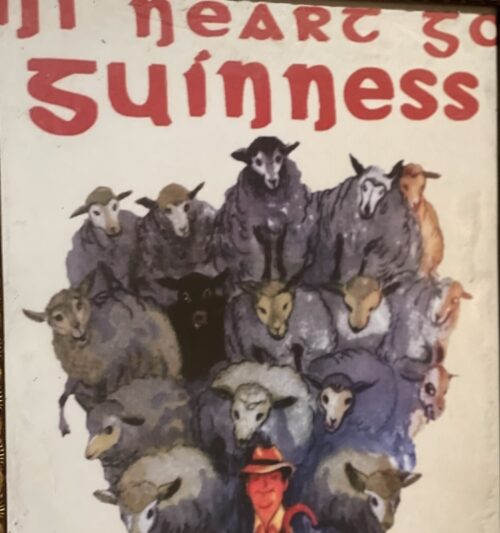
 35cm x 47cm Imagination is something Guinness Advertising has never been short of… From John Gilroy’s hapless zookeeper and his menagerie of creatures to a Polynesian surfer and a herd of white horses; from messages in bottles setting sail across the ocean to a single, heart-stoppingly enormous wave. Guinness have been carving out their own creative path for almost a century with decades of extraordinary and enduring print, TV and digital campaigns to their name, and hopefully they will continue to push boundaries to tell stories to the world. Here’s to original thinking !
35cm x 47cm Imagination is something Guinness Advertising has never been short of… From John Gilroy’s hapless zookeeper and his menagerie of creatures to a Polynesian surfer and a herd of white horses; from messages in bottles setting sail across the ocean to a single, heart-stoppingly enormous wave. Guinness have been carving out their own creative path for almost a century with decades of extraordinary and enduring print, TV and digital campaigns to their name, and hopefully they will continue to push boundaries to tell stories to the world. Here’s to original thinking ! -

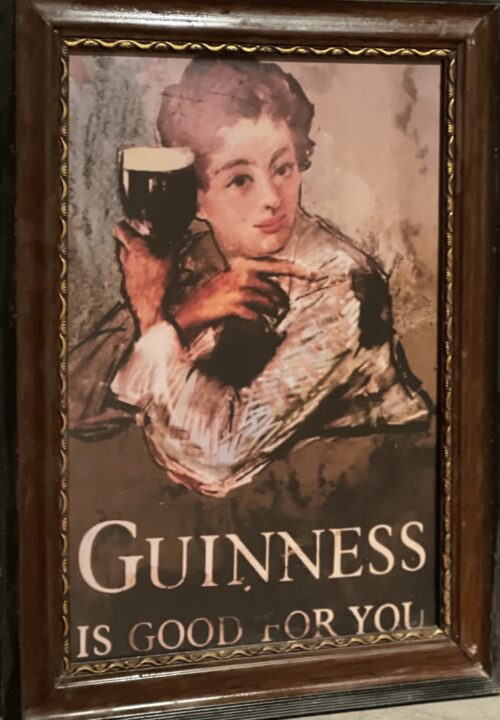 35cm x 45cm Imagination is something Guinness Advertising has never been short of… From John Gilroy’s hapless zookeeper and his menagerie of creatures to a Polynesian surfer and a herd of white horses; from messages in bottles setting sail across the ocean to a single, heart-stoppingly enormous wave. Guinness have been carving out their own creative path for almost a century with decades of extraordinary and enduring print, TV and digital campaigns to their name, and hopefully they will continue to push boundaries to tell stories to the world. Here’s to original thinking !
35cm x 45cm Imagination is something Guinness Advertising has never been short of… From John Gilroy’s hapless zookeeper and his menagerie of creatures to a Polynesian surfer and a herd of white horses; from messages in bottles setting sail across the ocean to a single, heart-stoppingly enormous wave. Guinness have been carving out their own creative path for almost a century with decades of extraordinary and enduring print, TV and digital campaigns to their name, and hopefully they will continue to push boundaries to tell stories to the world. Here’s to original thinking ! -

 40cm x 37cm Michael Collins (16 October 1890 – 22 August 1922) was an Irish revolutionary, soldier and politician who was a leading figure in the early-20th century struggle for Irish independence.During the War of Independence he was Director of Intelligence of the Irish Republican Army (IRA) and a government minister of the self-declared Irish Republic. He was then Chairman of the Provisional Government of the Irish Free State from January 1922 and commander-in-chief of the National Army from July until his death in an ambush in August 1922, during the Civil War. Collins was born in Woodfield, County Cork, the youngest of eight children. He moved to London in 1906 to become a clerk in the Post Office Savings Bank at Blythe House. He was a member of the London GAA, through which he became associated with the Irish Republican Brotherhood and the Gaelic League. He returned to Ireland in January 1916 and fought in the Easter Rising. He was taken prisoner and held in the Frongoch internment camp as a prisoner of war, but he was released in December 1916. Collins subsequently rose through the ranks of the Irish Volunteers and Sinn Féin. He was elected as a Teachta Dála for South Cork in December 1918. Sinn Féin's elected members formed an Irish parliament, the First Dáil, in January 1919 and declared the independence of the Irish Republic. Collins was appointed Minister for Finance. In the ensuing War of Independence, he was Director of Organisation and Adjutant General for the Irish Volunteers, and Director of Intelligence of the IRA. He gained fame as a guerrilla warfare strategist, planning many successful attacks on British forces together with 'the Squad', such as the "Bloody Sunday" assassinations of key British intelligence agents in November 1920. After the July 1921 ceasefire, Collins was one of five plenipotentiaries sent by the Dáil cabinet at the request of Éamon de Valera, to negotiate peace terms in London. The resulting Anglo-Irish Treaty, signed in December 1921, would establish the Irish Free State but depended on an oath of allegiance to the Crown. This was the clause in the treaty de Valera and other republican leaders found hardest to accept. Collins viewed the treaty as offering "the freedom to achieve freedom", and helped persuade a majority of the Dáil to ratify the treaty. A provisional government was formed under his chairmanship in early 1922. During this time he secretly provided support for an IRA offensive in Northern Ireland. It was soon disrupted by the Irish Civil War, in which Collins was commander-in-chief of the National Army. He was shot and killed in an ambush by anti-Treaty forces on 22 August 1922
40cm x 37cm Michael Collins (16 October 1890 – 22 August 1922) was an Irish revolutionary, soldier and politician who was a leading figure in the early-20th century struggle for Irish independence.During the War of Independence he was Director of Intelligence of the Irish Republican Army (IRA) and a government minister of the self-declared Irish Republic. He was then Chairman of the Provisional Government of the Irish Free State from January 1922 and commander-in-chief of the National Army from July until his death in an ambush in August 1922, during the Civil War. Collins was born in Woodfield, County Cork, the youngest of eight children. He moved to London in 1906 to become a clerk in the Post Office Savings Bank at Blythe House. He was a member of the London GAA, through which he became associated with the Irish Republican Brotherhood and the Gaelic League. He returned to Ireland in January 1916 and fought in the Easter Rising. He was taken prisoner and held in the Frongoch internment camp as a prisoner of war, but he was released in December 1916. Collins subsequently rose through the ranks of the Irish Volunteers and Sinn Féin. He was elected as a Teachta Dála for South Cork in December 1918. Sinn Féin's elected members formed an Irish parliament, the First Dáil, in January 1919 and declared the independence of the Irish Republic. Collins was appointed Minister for Finance. In the ensuing War of Independence, he was Director of Organisation and Adjutant General for the Irish Volunteers, and Director of Intelligence of the IRA. He gained fame as a guerrilla warfare strategist, planning many successful attacks on British forces together with 'the Squad', such as the "Bloody Sunday" assassinations of key British intelligence agents in November 1920. After the July 1921 ceasefire, Collins was one of five plenipotentiaries sent by the Dáil cabinet at the request of Éamon de Valera, to negotiate peace terms in London. The resulting Anglo-Irish Treaty, signed in December 1921, would establish the Irish Free State but depended on an oath of allegiance to the Crown. This was the clause in the treaty de Valera and other republican leaders found hardest to accept. Collins viewed the treaty as offering "the freedom to achieve freedom", and helped persuade a majority of the Dáil to ratify the treaty. A provisional government was formed under his chairmanship in early 1922. During this time he secretly provided support for an IRA offensive in Northern Ireland. It was soon disrupted by the Irish Civil War, in which Collins was commander-in-chief of the National Army. He was shot and killed in an ambush by anti-Treaty forces on 22 August 1922





